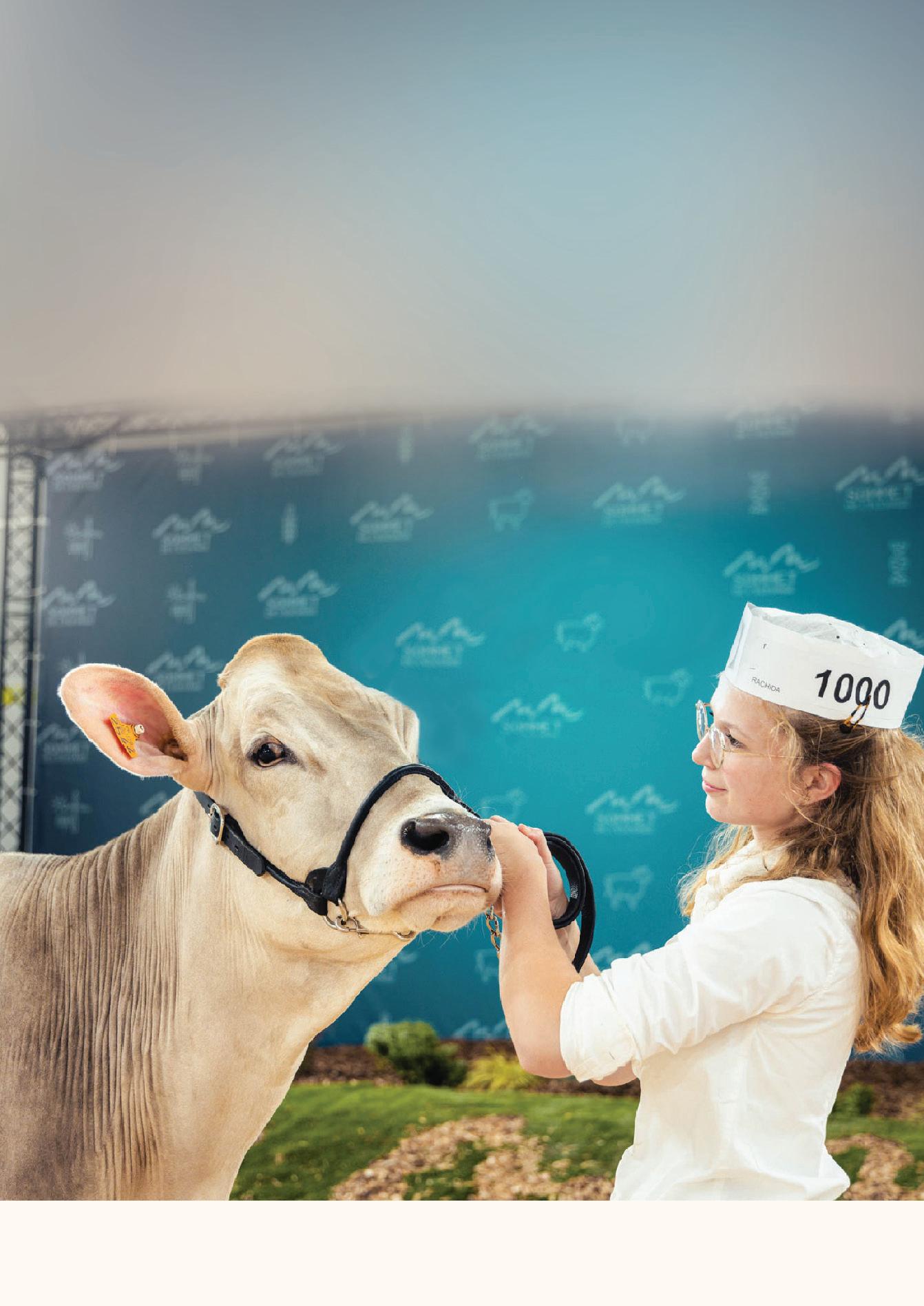


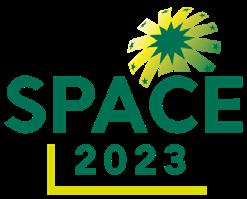


POULTRY BREEDING ANIMAL NUTRITION LIVESTOCK FARMING CAMEL FARMING JULY - SEPTEMBER 2023
23-26 October 2023 Riyadh, Kingdom of Saudi Arabia 12-14 sEPTEMBER 2023 Rennes, France CREATING SUSTAINABLE FOOD Dubai World Trade Centre, UAE 09 - 10 OCTOBER 2 0 2 3 Featuring 9-10 October 2023 Dubai UAE 20-22 november 2023 Abu Dhabi, UAE
Meet Us At

2,000 animals 1,550 exhibitors 105,000 visitors Organize your visit to the SOMMET Accommodation, transport, pre-and postshow farm tours +33 (0) 1 82 83 33 55 sommet@agrilys.fr October Clermont-Ferrand France 3 > 6 2023 sommet-elevage.fr INTERNATIONAL VISITORS > Book your free entry badge > Register for our guided farm tours on www.sommet-elevage.fr
THE QUALITY AND SAFETY SYSTEM FOR SPECIALTY FEED INGREDIENTS
OUR VISION
Excellence and Trust in Specialty Feed Ingredients
OUR MISSION
We set the worldwide leading accredited scheme for the feed industry contributing to safe food. We facilitate trade, driven by uncompromised focus on risk management, safety and quality. With our collective experience, knowledge, and expertise, we proactively respond to the emerging challenges for the specialty feed ingredients .
Key Features






Accredited Feed Safety Management System
Dedicated chapter on Good Manufacturing Practices including Human Health
HACCP supporting document per manufact uring
Additional mandatory Feed Fraud Prevention and Defence module
Unannounced audits
Transparency on the certification scope of the certified feed business through our public list

Facilitate the worldwide trade of Specialty Feed Ingredients
FEED SAFETY - QUALITY - INTEGRITY
FAMI-QS is a preeminent quality and feed safety management system for the sector of specialty feed ingredients and their mixtures. With our collective experience, knowledge, and expertise, we proactively respond to the emerging challenges for the specialty feed ingredients
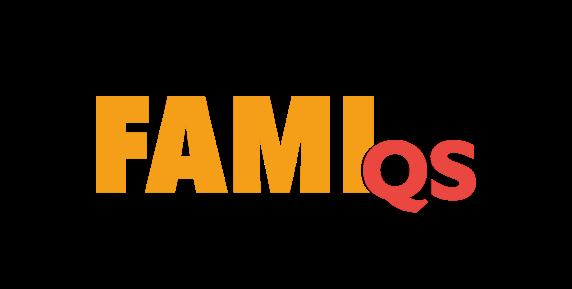
www.fami-qs.org
Managing Editor
M. Matt
Associate Editors
Jessie Jorge
Megha Mary Matt
Dr. Ann Matt
Assistant Editors
Raseena Navaskhan
Loimee De Leon
Contributors
Dr. Hansel Geo Thomas
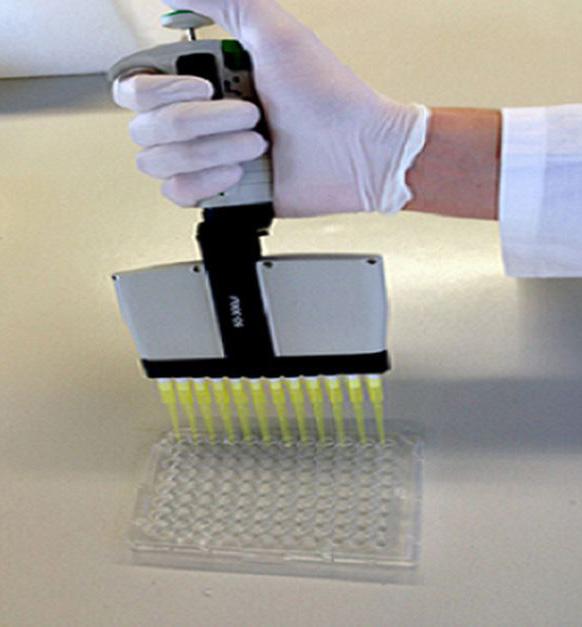
Neville J. Chandler
(USA) LLC 2023
US Office
Matt Media (USA) LLC.
1713 E. Morgan Court Gilbert, Arizona 85295
United Kingdom
Matt Media International Ltd. 12 Gateway Mews London N11 2UT
Middle East Offices
Matt Media LLC
Sharjah Media City United Arab Emirates
Al Saad Adv. & Publishing LLC P O Box 25694, Sharjah United Arab Emirates
Email: info@livestockmiddleeast.com | gulfag@emirates.net.ae | www.livestockmiddleeast.com





Livestock & Poultry Middle East & Asia is designed to serve the fast growing livestock and poultry sectors in the Asia and Middle East region by providing the expert information to our readers in our four comprehensive issues in a year. It is circulated throughout Middle East region and worldwide in addition to the extra distribution at various Livestock, Poultry, Aquaculture and Agriculture Shows. The magazine provides editorial coverage on a wide range of topics which are of interest to industry professionals.


All rights reserved. The opinions and views expressed in this publication are not necessarily those of the publishers. Readers are requested to seek specialist advice before acting on information contained in this publication, which is provided for general use and may not be appropriate for the reader’s particular circumstance. The publishers regret that they cannot accept liability for any error or omissions contained in this publication.

JULY-SEPTEMBER 2023 LIVESTOCK & POULTRY ME 2 CONTENTS NEWS 04 SPACE SHOW PREVIEW 20 SOMMET DE L’ELEVAGE SHOW PREVIEW 22 SAUDI AGRICULTURE SHOW PREVIEW 24 AGRA ME SHOW PREVIEW 26 POULTRY DEWORMING 27 POULTRY BREEDING 28 LAYING HENS 32 EGG HANDLING 36 MEAT 37 FEED PROTEIN 38 ANIMAL NUTRITION 40 ANIMAL HEALTH 41 DAIRY TECHNOLOGY 42 LIVESTOCK FARMING 43 CAMEL FARMING 44
Media©
Published by Matt
20 24 27 37 36
44
41 32 38
Cover Photo Courtesy: Sommet De L’elevage, France
AVIAGEN - THE MOST PROFITABLE CHOICE
IN THE LAST 5 YEARS THE AVIAGEN R&D PROGRAMME HAS DELIVERED ANNUAL IMPROVEMENTS OF:
• 0.5g IMPROVEMENT IN ADG
• 2-3 POINT FCR IMPROVEMENT
• 0.2% WHITE MEAT YIELD

• 0.25% IMPROVEMENT IN LIVABILITY
The next 5 years of genetic improvement and performance are already underway CONSISTENTLY DELIVERING THE BEST RETURN ON YOUR INVESTMENT
News
ADAFSA PARTNERS WITH 13 LOCAL COMPANIES TO SUPPLY THE “FODDER MARKET”
The Abu Dhabi Agriculture and Food Safety Authority (ADAFSA) has entered into agreements with 13 leading local companies to establish partnerships in the sale and marketing of high-quality grass and concentrated feed. These agreements aim to fulfil the requirements of the livestock sector in the country and support the development of the “Fodder Market.”
The agreements were signed on behalf of the Authority by HE Saeed Al Bahri Al Ameri, Director General of ADAFSA, while the representative of each company signed the agreement
for his company, in the presence of HE Mariam Harib Al Suwaidi, Deputy Director General of ADAFSA for Operational Affairs, HE Mouza Suhail Al Muhairi, Deputy Director General of ADAFSA for Regulatory and Administrative Affairs, HE Rashid Mohammed Belrasas Al Mansouri, Executive Director of the Animal Wealth Sector, in addition to a number of officials and owners of leading feed companies in the country. Highlighting the significance of animal feed in livestock rearing, HE Rashid Mohammed Al Mansoori, Executive Director of
the Animal Wealth Sector, said that fodder constitutes more than 70% of the cost of raising livestock, so ADAFSA is keen to enhance the animal feed trade system and improve its quality by creating fair competition among leading national companies and consolidating their ability to meet the needs of livestock for high-quality fodder. Under the agreements, the signatories are obligated to provide quantities of fodder for sale to breeders, ensuring a sustainable supply of fodder while enhancing the strategic stock of animal feed.
STEERING THE CHARGE FOR GROWTH IN SOUTH AFRICA’S BEEF INDUSTRY
In a momentous development, South African beef has received approval for export to Saudi Arabia, marking the first time in two decades. This breakthrough has ignited a sense of optimism among the country’s beef producers, fuelling their belief

in the industry’s promising growth prospects. The Department of Agriculture, Land Reform and Rural development and the Department of Trade, Industry and Competition together with the South African beef industry, and in particular KARAN BEEF were pivotal in the negotiation. KARAN BEEF is spearheading the way for the industry’s advancement. “The local market for beef products, though still strong, is becoming a little saturated,” Matthew Karan, Director KARAN BEEF says, “but there is a lot of opportunity internationally. The industry is a big employer, but it could be bigger. And we want to help accelerate the growth that will create more jobs and stimulate the economy by expanding the export market. Further opening new export markets, will result in growth opportunities
for local future commercial cattle farmers to take advantage of.”
With a legacy of over 50 years as a leader in quality beef products in South Africa, KARAN BEEF has consistently led efforts to elevate the presence and reputation of South African beef globally. Their unwavering commitment has left an indelible mark on the industry’s global reach and success.
Having made significant strides in expanding its global footprint, KARAN BEEF is establishing a strong presence in the Gulf Countries (GCC). Buoyed by this success, their sights are now set on the success of Association of Southeast Asian Nations (ASEAN) which includes Brunei, Cambodia, Indonesia, Laos, Malaysia, Myanmar, the Philippines, Singapore, Thailand, and Vietnam, which is a thriving market.
JULY-SEPTEMBER 2023 LIVESTOCK & POULTRY ME 4

TROUW NUTRITION LAUNCHES NEW SERVICE TO ACCURATELY ESTIMATE THE ENVIRONMENTAL FOOTPRINT OF MILK
Trouw Nutrition launches
MyMilkPrint, an easy-to-use service that allows feed advisors to calculate the environmental impact of milk at the farm level, enabling them to develop effective emission reduction strategies for dairy producers.
To remain competitive in an increasingly sustainability-oriented marketplace, dairy producers are being challenged to measure and reduce the environmental impact of their products. Early adopters of more sustainable practices are already benefitting from a clear competitive advantage, making value-chain transparency a key selling point. Others are still exploring where to begin their
‘sustainability journey’ and what they can do on the farm level to make their milk production more sustainable. Feed advisors have a key role to play in this transition.
Trouw Nutrition is addressing the growing need for transparency around the sustainability of milk with the launch of MyMilkPrint, a one-stop online environmental footprint service for milk production. The new service, integrated into Trouw Nutrition’s MyNutriOpt digital platform, uses farm-specific inputs such as milk production, on-farm energy use, and farm-grown ingredients, combined with data on purchased feeds and nutritional data. These inputs are then translated into an accurate estimate of the environmental impact
per kg of farm-gate milk produced. MyMilkPrint is an easy-to-use service, requiring no specialist knowledge and minimal setup or training. With just a few clicks, feed advisors can uncover emission hotspots, and identify effective strategies to reduce the environmental impact of their client’s milk, without compromising on milk production or animal performance. For example, replacing a fat or protein source in a feed ration with an alternative ingredient that has a lower environmental footprint can lead to significant reductions in the total environmental impact of the feed ration. This, in turn, reduces the environmental impact of the milk produced.
AL ISLAMI FOODS DELIVERS MEAT WITH NO ADDED HORMONES FOR GENERATIONS TO COME
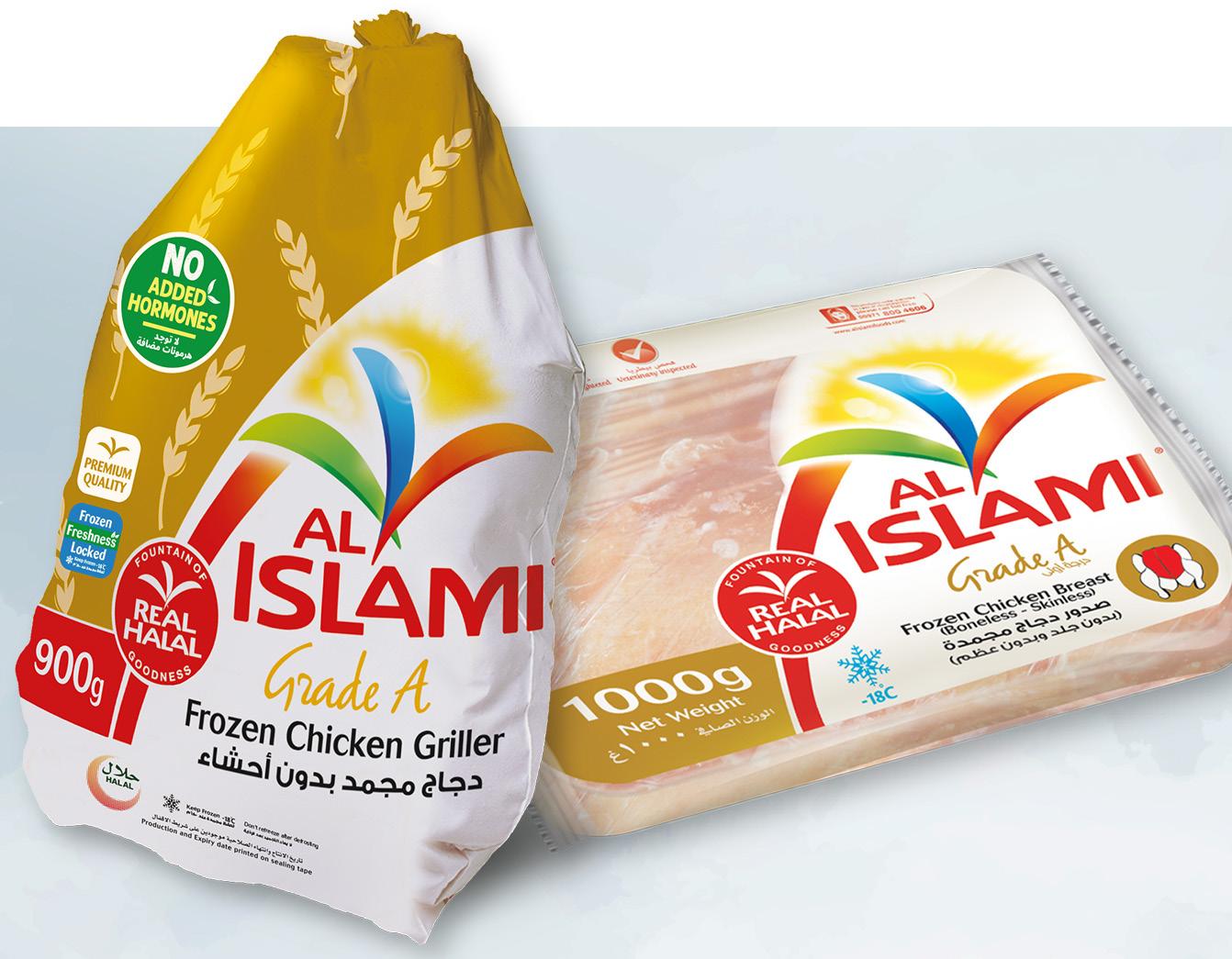
As consumers increasingly prioritise their well-being, the demand for natural meat has gained significant traction. Al Islami Foods, renowned for its commitment to delivering premium culinary experiences, proudly offers meat with No added Hormones.
Discover why choosing traditionally produced meat with no added hormones goes beyond health considerations and how discerning families can indulge in premium food and enhance their lives by consuming meat as it should be.
When it comes to food with No added Hormones, what makes Al
Islami’s ‘Real Halal’ meat special? Here’s why it is the right choice for families:
• Animal Welfare: In a conventional market setting, animals are supplemented with hormones to help weight gain. Consequently, animals fed with unnatural additives are more likely to develop a disease or illness, which can then be passed on to individuals. Meat with No added Hormones ensures the safety of folks while allowing animals to develop in harmony with nature rather than against it.
• Healthier & Tastier: Hormones play a huge role in the normal functioning of humans. They control heart rate, sleep cycles, metabolism, appetite, growth and development, mood, stress, body temperatures and more. Meat with No added Hormones keeps the body’s vital equilibrium undisturbed.
In addition to being the healthier option, hormone-free meat is generally tastier than its hormone-laden counterpart. The brand provides grass-fed meat that develops lean, tasty muscle promoting a natural and wholesome approach to nourishing the body.
• Upholding Islamic Principles: Al Islami embodies the essence of Halal in every aspect of our brand. The unwavering dedication to treating animals with respect, free from the harmful influence of chemicals, upholding Halal requirements, aligning with esteemed values and dietary guidelines of Islam, and offering consumers choices that honour religious beliefs.
• Preserving Tradition: Al Islami Foods recognises the significance of upholding and maintaining cultural practices. By providing meat with No added hormones, the brand supports the well-being of individuals while honouring age-old traditions and cultural heritage.
JULY-SEPTEMBER 2023 6 NEWS
FAO WORKSHOP ON THE SIDELINES OF THE LIBYA INTERNATIONAL EXHIBITION FOR AGRICULTURAL AND LIVESTOCK DEVELOPMENT



FAO organized a national workshop on Agricultural Development through Remote Sensing Technologies in Libya in cooperation with the Ministry of Agriculture and Livestock and the Ministry of Water Resources. This event was organized during the second day of the four-days Libya International Exhibition for Agricultural and Livestock Development and its Supplies that is an important opportunity to promote agricultural and animal production in Libya and raise awareness of the importance of these sectors in achieving economic and social development in the country. This important platform presented the latest technological developments, innovative products and services and showed the available capabilities in
the agricultural sector in Libya. This workshop was conducted as part of the Capacity Development Program within the framework of the two ongoing FAO projects: “Monitoring, evaluation and rationalization of water use for agriculture sector in Libya” funded by Italian Agency for Development Cooperation (AICS) and the “Evaluation of irrigation infrastructure, crop mapping and estimation of agricultural water use in Libya” funded by African Development Bank (AfDB).
Six lectures have been presented and discussed for all the attendance nearly fifty-five participants with the overall aim to strengthen national capacities to launch agricultural development in general and to
monitor water consumption and productivity through remote sensing by adopting effective options for increasing water productivity throughout all the country.


















The participants welcomed the expected MerWat-Libya from FAO projects: the national platform for monitoring, evaluation and rationalization of agricultural water and land use in Libya that will contribute for building national capacities in monitoring the agricultural water use through remote sensing and the adoption of effective steps that contribute to achieving food security, poverty reduction, and resilience to climate change by ameliorating water collection, distribution and use in agricultural production.

JULY-SEPTEMBER 2023 LIVESTOCK & POULTRY ME NEWS 7
Innovation Expertise Insight Find out who is there at www.showco.org VIV MEA Abu Dhabi Together we can achieve more VIV MEA 20, 21, 22 November 2023 23060017_ShowCo_Livestock_182x131mm_V5.indd 1 10-07-2023 16:49
KEMIN OPENS FIRST FACILITY TO PRODUCE PROTEUS® LINE OF CLEANLABEL, DRY PROTEIN INGREDIENTS FOR MEAT AND POULTRY INDUSTRY
Kemin Industries, a global ingredient manufacturer that strives to sustainably transform the quality of life every day for 80 percent of the world with its products and services, has opened a new manufacturing facility in Verona, Missouri, to produce its Proteus® line of clean-label functional proteins that are used to increase yield and enhance the quality of meat and poultry products within the food industry.
Kemin broke ground on the new building in November 2021, and recently, the company hosted a ribboncutting ceremony to officially
open the 38,000-square-foot facility. The operation is a $70 million investment that employs nearly 30 full-time workers in the Verona community.
The facility, which will run under FSSC 22000 Certification and completed its first run under United States Department of Agriculture (USDA) inspection on July 25, 2023, will manufacture Kemin Food Technologies – North America’s patented Proteus line of clean-label, functional protein ingredients for a variety of meat and poultry applications. The Proteus portfolio of musclebased protein ingredients can help food processors naturally
retain moisture typically lost in processing, which translates to processing efficiencies with improved quality.
The state-of-the-art Proteus production plant will have an initial capacity to produce enough functional protein to treat more than a billion pounds of meat, poultry and protein-based applications.
Kemin anticipates yieldenhancing Proteus solutions will further expand the global reach of its Food Technologies business, with plans for additional production capacity in Latin America beginning in 2024.
STRATEGIC PARTNERSHIP BETWEEN NAQUA AND SALIC TOWARDS ACHIEVING THE GOALS OF VISION 2030
A strategic partnership contract was signed between NAQUA and the Saudi Agricultural and Livestock Investment Company (SALIC), one of the companies owned by the Public Investment Fund. The signing ceremony was attended by His Excellency the Minister of Environment, Water and Agriculture, and the Chairman of the Board of Directors of SALIC, Eng. Abdulrahman bin Abdulmohsen Al-Fadley. The signing took place at the Ministry of Environment, Water and Agriculture headquarters on Sunday, June 11, 2023, in the presence of representatives from both companies.

As part of this deal, it was agreed to raise the capital of NAQUA through a primary investment from SALIC, resulting in SALIC owning 42.4% of the total shares of NAQUA.
On this occasion, His Excellency the Minister of Environment, Water and Agriculture and Chairman of the Board of SALIC, Eng. Abdulrahman bin Abdulmohsen Al-Fadley, said: “The strategic partnership between SALIC and NAQUA aims to achieve the goals of Vision 2030 in the field of ensuring the sustainability of vital resources, and it aligns with SALIC’s strategic objectives in achieving national food security goals and enabling the agricultural food sector by enhancing local production, which will reflect positively on improving the trade balance deficit.”
His Excellency added, “This approach aligns with the objectives of the Public Investment Fund and
its portfolio companies as a primary driver of local economic growth. Through long-term partnerships with the private sector, SALIC will work on developing and growing the local aquaculture sector through its partnership with NAQUA. This aims to empower the aquaculture sector, which will contribute to increasing production and creating direct and indirect job opportunities.”
JULY-SEPTEMBER 2023 LIVESTOCK & POULTRY ME 8 NEWS




Co-located: 23-26 OCTOBER Riyadh International Convention & Exhibition Center 2023 Under the Patronage of Exhibition in the Middle East on its 40th Anniversary Source your needs at the LARGEST International Agriculture Halls 6 Visitors +20,000 Intl. Brands 380 Countries 35 Pavilions 16 Exhibitors 300 Space +21,000 Sqm Official Media Magazine Partners
FISHERIES DEVELOPMENT OMAN SHINES AT SIMEC AQUAFISH 2023
Fisheries Development Oman (FDO), a leading entity in the development of Oman’s fisheries sector, recently participated in the prestigious SIMEC Aquafish 2023 exhibition held in Saudi Arabia. The event proved to be a resounding success for FDO, as it received significant interest from visitors who were captivated by the abundant investment opportunities in Oman’s flourishing fisheries sector. FDO showcased its wide range of high-quality products and valueadded services, reinforcing its reputation as a key player in the regional fisheries industry.
SIMEC Aquafish 2023, one of the largest aquaculture exhibitions in the region,
attracted industry professionals, investors, and government representatives from across the globe. FDO’s participation allowed them to present Oman’s thriving fisheries sector to an international audience and highlight the country’s potential as an attractive investment destination.
Visitors to FDO’s booth were impressed by the diverse range of investment opportunities available in Oman’s fisheries sector. FDO highlighted its commitment to sustainable fishing practices, which ensure the long-term viability and environmental preservation of Oman’s rich marine resources. The showcase of advanced aquaculture
NEOGEN® LAUNCHES IGENITY® ENHANCED DAIRY
Neogen Corporation (NASDAQ: NEOG) announced that it has launched Igenity® Enhanced Dairy, a new and progressive genomic data management tool.
Igenity Enhanced Dairy is a new digital service that empowers dairy producers to make better selection and mating decisions. By integrating in-herd phenotypic data, pedigree information, and existing predicted transmitting abilities (PTAs) from the Council on Dairy Cattle Breeding (CDCB),

the platform delivers a genomic evaluation of dairy cattle. Producers are able to utilize the data provided by Igenity Enhanced Dairy to make an inherd assessment of the genetic potential by pairing each animal’s performance data with the results received from an Igenity Select profile. The ability to apply on-farm phenotype data to a standard genetic assessment leverages the management and geography of the individual animals to ultimately enable better decisionmaking.
“Neogen is thrilled to introduce a useful tool that contributes to the
technologies and infrastructure further demonstrated FDO’s dedication to enhancing productivity and maintaining high-quality standards throughout the value chain.
FDO’s participation in SIMEC Aquafish 2023 reflects the government’s efforts to diversifying Oman’s economy and harnessing the vast potential of its fisheries sector. With its strategic location, favorable business environment, and extensive natural resources, Oman presents an attractive destination for local and international investors seeking growth opportunities in the aquaculture industry.
improvement of genetic selection in the dairy cattle market,” said Dr. Victor Pedrosa, Neogen’s Director of Genetic Prediction. “Data plays a crucial role in decision-making, and the Igenity Enhanced Dairy platform allows producers to take an additional step forward. The traditional genetic evaluations provided by the CDCB have significantly enhanced the genetic progress of several economically valuable traits. Now, with Igenity Enhanced Dairy, we are enabling an extra gain in the dairy selection process.”
Neogen Genomics constantly provides high-quality data to assist with herd improvement and improve cattle operations, and the new Igenity Enhanced Dairy equips producers with valuable data and evaluates their herd’s potential, assisting in making the most informed decisions.
JULY-SEPTEMBER 2023 LIVESTOCK & POULTRY ME 10 NEWS
SKRETTING’S LATEST SHRIMP FEED ENABLES CLEAN, SIMPLIFIED OPERATION AND BETTER GROWTH FOR HATCHERIES





Elevia is a new, innovative feed from Skretting, engineered to offer superior nutrition and water quality in shrimp hatcheries and nurseries. The precisely produced, stable micro diet improves larval performance while simplifying feed management and ensuring a cleaner system.
Formulated to mimic the natural feeding approach of shrimp larvae, Elevia is a next generation solution that surpasses conventional feeding methods and traditional aquafeed ingredients, setting a new standard for hatchery performance. Incorporating new sustainable raw materials such as essential long-chain omega-3 fatty acids, algae-derived DHA
and hydrolysed marine proteins, it enables shrimp to develop into strong and healthy post larvae with increased capacity to thrive in nursery environments.



Elevia improves the ability of shrimp to handle challenges by providing them with nutrients that improve their immune system and overall resilience. This enables the shrimp to cope more effectively with stressful environmental changes. As a result, shrimp production becomes more reliable and successful, reducing the risks associated with variations in water conditions and other factors.
Through Elevia’s advanced formulation, physical properties and colour, the need for multiple diets and flakes is






THE SMARTER FUTURE


significantly reduced, resulting in simplified operations and feed management. Another key feature that contributes to streamlining operations is the diet’s ability to maintain water stability. Thanks to its unique composition and encapsulation of omega-3 fatty acids, the leaching of lipids into the production system is prevented, ensuring cleaner and uncompromised water quality. Consequently, intact feed particles remain stable for extended periods, minimising the necessity for frequent replacements. This not only promotes optimal water conditions but also facilitates essential system maintenance, all while alleviating the strain on bio- and mechanical-filters.

NEWS 11 4 EVENTS | 3 DAYS | 1 VENUE
REGISTER TO VISIT gulfoodmanufacturing.com
Gulfood Manufacturing offers innovative solutions to connect the global food manufacturing industry, providing platforms to unveil new products, services and technologies, connect with industry leaders, address key challenges, create new business opportunities, and gain valuable insights into emerging market trends.
7-9 NOV 2023
DUBAI WORLD TRADE CENTRE
PLATINUM SPONSOR
LIVETEC LAUNCHES NEW APP FOR POULTRY FARMERS TO GET AHEAD OF BIRD FLU

An industry-first app from biosecurity leaders, Livetec launched with a promise to help poultry farmers and backyard keepers get ahead of the spread of bird flu amid the UK’s ongoing outbreak.
The Livetec Systems App is a disease management mobile app which helps farmers get ahead of the spread of AI and provides the tools they need to manage and protect their livestock. It comes
amid the worst ever outbreak of avian influenza in the UK, with tough laws imposed by government to try and curb the devastating spread.
Designed as an easy-to-use tool which can accompany farmers throughout their day-to-day activities, the Livetec Systems App has been created using Livetec’s signature lab to farm philosophy to bring contemporary technology to over a decade’s real-world
experience on farm.
Calling on its extensive knowledge of avian influenza, the Livetec Systems App empowers early detection and quick response to animal health issues with a wealth of intuitive, practical features including real-time outbreak notifications and reporting: Real-time outbreak notifications, Outbreak reporting, and Disease outbreak monitoring.
NOVUS SUPPORTS BROILERS WITH NEW SCALE UP™ PROGRAM
Program for Broilers focuses on three focus areas – performance, meat quality and carcass yield, and sustainability and animal welfare. By supporting these pillars through intelligent nutrition, we can positively impact profitability for the broiler producer.”
carcass quality, MINTREX® Cu trace mineral to support performance, and the REDUCE AND REPLACE™ strategy, which is shown to reduce the excretion of zinc (up to 37%), copper (up to 41%) and manganese (up to 35 %).
Novus International debuts a new program aimed at enhancing the financial success of broiler producers. The Scale Up™ Program for Broilers is focused on improving meat production and carcass quality through sustainably driven intelligent nutrition.
“Intelligent nutrition is the combination of experienced people, insightful perspectives and smarter solutions that allow us to put more into everything we create,” says Dr. Gabriela Cardoso Dal Pont, the poultry solutions manager for Americas, NOVUS. “The Scale Up™
MINTREX® BisChelated Trace Minerals serve as the foundation for the program.
Available in organic zinc, copper and manganese, the mineral is bonded to methionine source HMTBa, which protects the mineral as it travels through the digestive system to the site of absorption making it less susceptible to antagonism in the gut. This also means that over-supplementation, which is often found with inorganic trace minerals, is unnecessary. The program’s strategies, which are customized to meet the farm’s goals, include MINTREX® Zn trace mineral to support meat and
“Even when reducing total mineral inclusion and replacing part of the ration’s inorganic trace minerals with MINTREX® trace minerals, producers can see the same or better results with less mineral in the feed and less mineral excreted into the environment,” Cardoso says.
In commercial and research trials the strategies used in the Scale Up™ Program for Broilers are shown to help optimize the broiler bird performance:
• Improving broiler chicken survivability by an average of 1.46%
• Reducing the incidence of wooden breast and white striping
• Reducing foot pad issues (up to 25%), and skin scratches (up to 25 %)
• Supporting broiler performance under intestinal challenge
• Improving bone strength up to 5.4%.
JULY-SEPTEMBER 2023 LIVESTOCK & POULTRY ME 12 NEWS
EXPANSION OF EVONIK’S DL METHIONINE PRODUCTION CAPACITY IN SINGAPORE MOVES TO NEXT STAGE







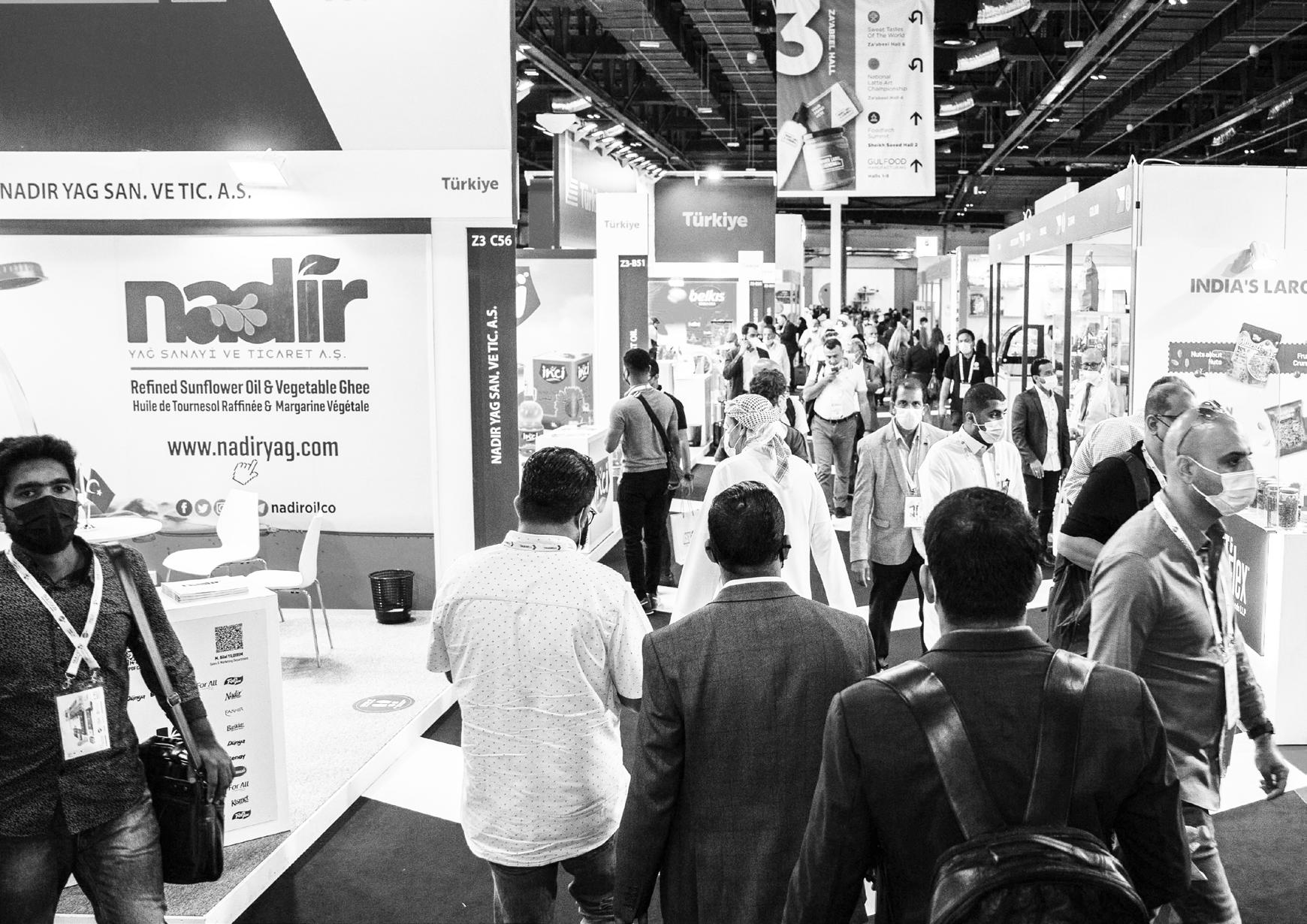
Evonik is making progress with the expansion of its DL-methionine production plant in Singapore: In order to reach an important milestone in the construction process, production at the Singapore plant on Jurong Island will be reduced for three months in Q4/2023, followed by another three-month tie-in shutdown in the first half of 2024.
This shutdown is part of the implementation of Evonik’s methionine asset strategy to safeguard long-term global supply security. The expansion is proceeding as expected and the planned production stops in Q4/2023 and H1/2024, which are necessary for maintenance and safety reasons, will allow modifications to be made that


would not be possible during dayto-day operations.



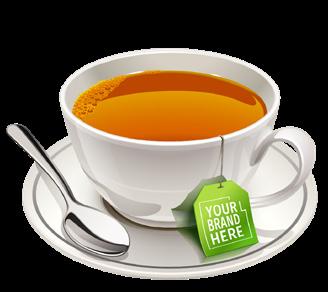

“We fully understand that these shutdowns may pose challenges for our customers and our teams have prepared mitigation plans for MetAMINO® supply from our global production network. We are in continuous communication with regional and global customers to carefully plan shipments”, says Noel Kim, Regional Vice President Animal Nutrition.


Earlier this year, Evonik announced a high double-digit million-euro investment to boost production capacity of MetAMINO® (DL-methionine) on Jurong Island, Singapore, by 40,000 metric tons per year to around 340,000 metric tons per year. The expansion will improve the efficiency of the
facility’s processes and reduce the carbon footprint of all Evonik’s MetAMINO® production in Singapore by six percent (Scope 1+2+3).
Methionine is used in livestock production to feed animals healthily, efficiently, and sustainably. With its sciencebased approach, the Animal Nutrition business line of Evonik develops products, services and system solutions that help supply a growing world population with healthy, high-quality and affordable animal protein. Animal Nutrition is part of Evonik’s Nutrition & Care Division and contributes significantly to the profitable growth of Nutrition & Care through its self-financing power.

JULY-SEPTEMBER 2023 LIVESTOCK & POULTRY ME NEWS 13
SOURCE IT. OWN IT. BRAND IT. PRIME-EXPO.COM REGISTER FOR FREE ENTRY ORGANISED BY CO-LOCATED WITH
MENA’S NO.1 EVENT FOR PRIVATE LABEL & CONTRACT MANUFACTURING
NEW SD-9 SILO DISPLAY FROM HOTRACO AGRI
HOTRACO AGRI has expanded their feed weighing package with a new product: SD-9 Silo Display. This new silo display makes the feed filling process easier and prevents feed waste because the truckdriver of the feed supplier has live visibility of the silo fill level.
Benefits of SD-9 Silo Display
are no more feed waste, easy feed fill process, live visibility of silo fill level and simple and reliable system. Normally the content of silos and their current level of fill is only visible on the main controller. When silo weighing is applied, the SD-9 can display the content of up to 9 silos. The
SD-9 is mounted near to silos, so the driver who supplies the feed can see the filling grade in real time. When the farm manager sets the levels for the ‘FILL’ and ‘STOP’ warning, the SD-9 shows said warnings accordingly so the driver knows which silo should be filled first and when the filling should be stopped.
TANMIAH SECURES SAR 200MN INVESTMENT IN SAUDI ARABIA, ENHANCING EXPANSION THROUGH PARTNERSHIPS WITH DUTCH COMPANIES
Tanmiah Food Company has been implementing its strategic growth plans since early 2020, by expanding its operations and investing in modern equipment and technologies from renowned Dutch companies such as Marel BV, Mavitec BV, Ottevanger Milling Engineers, Van Aarsen International, Prinzen BV, Colubris Cleantech BV, GEA Netherlands, JBTC Netherlands, Viscon Group and Meyn Food Processing, for delivering high-quality products. These investments totaling SAR 200m, are expected to support the Company’s growth plans.
Recently, the Company signed agreements with several Dutch companies valued at nearly EUR
48mn through Sharia-compliant financing from Rabobank, a Dutch multinational banking and financial services company. The agreement strengthens the partnership, knowledge sharing, innovation, investment, and trade ties between KSA and the Netherlands, in line with the Kingdom’s Vision 2030 to achieve food security and selfsufficiency.
A delegation from the Dutch Embassy, led by Agricultural Counsellor Erik Smidt, Agricultural Advisor Sophie Hollanders, and Agricultural Officer Ismail Adam, visited Tanmiah’s headquarters in Riyadh. During their visit, Ahmed Osilan, Board Member and Executive Director and several
officials from Tanmiah presented the Company’s 2030 plan of entering the global halal food market to offer innovative and high-quality products that meet international standards.
The delegation discussed ways to strengthen cooperation and transfer local expertise, such as Saudi Good Agricultural Practices (GAP), halal certification, and SAUDI MADE, on a global scale. Tanmiah is committed to achieving its ambitious goals and becoming a major global halal food market player.
The delegation also visited and planted local trees as part of Tanmiah’s One Million Tree initiative in the Shaqra governorate, which uses treated water from poultry waste and treated bio-organic manure to plant and irrigate trees. The project seeks to create a sustainable circular approach that recycles wastewater from its facilities, turning waste products into fertilizer, reducing regional carbon emissions and contributing to the Saudi Green Initiative. Tanmiah’s community participation plan through the distribution of seeds as part of an upcoming campaign will be announced at a later stage.

JULY-SEPTEMBER 2023 LIVESTOCK & POULTRY ME 14 NEWS
SDAL, CARREFOUR SIGN COOPERATION AGREEMENT

signed the agreement.
Al Tunaiji stated that the cooperation is part of the department’s plan to expand the strategic partnership with the private sector, which contributes to coming up with marketing strategies and achieving them due to the great experience Carrefour has in retail sales and marketing both locally and globally.
The Sharjah Department of Agriculture and Livestock (SDAL) has signed a cooperation agreement with Majid Al Futtaim’s Carrefour to establish a partnership supporting local agricultural and animal products, exchanging
experiences, and developing marketing strategies.
At the department’s headquarters, Dr. Khalifa Musabah Al Tunaiji, Head of SDAL, and Bernardo Perloiro, Chief Operating Officer for the GCC at Majid Al Futtaim Retail,
Perluero explained that the cooperation would support the diversity of national agricultural products in Carrefour stores in the UAE and provide more local products, strengthening the national economy and enhancing food security and its objectives, in line with the National Strategy for Food Security 2051.
THE POWER OF PINK FISH: INCREASING NORWEGIAN SEAFOOD CONSUMPTION IN THE MIDDLE EAST
The Norwegian Seafood Council (NSC), a key partner to Norway’s fisheries and aquaculture industry, has played a significant role in driving consumption of the country’s iconic pink fish in the Middle East. Now, with topics like wellness and sustainability growing in popularity, the NSC can leverage its access to Norwegian salmon to meet rising demand in the region.
In late 2022, the NSC celebrated 25 successful years as a supplier of Norwegian seafood to the UAE – firmly cementing Norway’s leading position as a source for high quality blue food in the Middle East. With a trade presence dating back to 1998 – marked by a 200-tonne shipment of salmon – the NSC has seen
over 40 million meals brought to the UAE, with almost three times as many being delivered to surrounding countries in the region.
As a global market leader and the largest provider of fresh salmon, the NSC is perfectly positioned to cater to the decades-long trend of increased Norwegian seafood consumption across the Middle East. The Scandinavian nation’s pioneering approach to salmon farming and lengthy history of craftsmanship in seafood production further underpin its credibility and continue to place it at the forefront of regional and international seafood sourcing and supply.
The Middle East’s ongoing shift towards healthy living –paired with strict governmental
regulations to ensure high standards of food safety and thorough management of natural resources to maintain sustainability – has significantly influenced the growing regional demand for lean seafood options. This has provided a unique opportunity for the inclusion of Norwegian salmon and cod in local consumption habits, with the fresh fish promoting a balanced, healthy, and flavourful diet.
The premium nature of Norwegian seafood also complements the Middle East’s appreciation for high-quality food, bringing exceptional nutritional value and expanded culinary options to the region’s flourishing gastronomic market.
JULY-SEPTEMBER 2023 LIVESTOCK & POULTRY ME NEWS 15
IMPROVING LAYER HEN WELFARE WITH BETTER BONE HEALTH
Keel bone damage, deviations or fractures in a bird’s breastbone, is a prevalent problem among commercial laying hens. This damage may be painful for hens and can be linked to the number and quality of their eggs. Keel bone damage is a multifactor problem attributed to a combination of housing design, genetics, feed and nutrition, behavior, rearing practices and other issues.
To address this welfare and production challenge, the Foundation for Food & Agriculture Research (FFAR) and Open Philanthropy created the
Layer Hen Keel Bone Health Program to provide funds to support global, crossdisciplinary teams that use evidence-based approaches to measurably reduce the incidence of keel bone damage. This program expands upon previous FFAR funding for keel bone research. The program is awarding two grants totaling $2,989,012 to researchers at the University of Edinburgh and the University of California, Davis (UC Davis) who are taking innovative genetic and interdisciplinary approaches to investigating the multi-factorial
causes of keel bone damage. Several matching funders provided support for a total $6,990,477 investment.
“Improving the welfare of animals is a critical component of animal husbandry, and keel bone damage is a serious threat to the wellbeing of layer hens,” said Nikki Dutta, FFAR interim scientific program director for Advanced Animal Systems. “These research projects are helping ensure humane treatment and a better quality of life for the animals that meet our food and nutrition needs.”
AI-BASED COMPUTER VISION FOR CRACK DETECTION
AI-based Computer Vision systems have emerged as a gamechanger in the detection of cracks in eggs. These systems utilize advanced algorithms and deep learning techniques to analyze high-resolution images of eggs, identifying cracks with remarkable accuracy and efficiency.
The process begins with the acquisition of high-quality and multiple images of individual eggs or groups of eggs using specialized cameras. These images are then fed into a
computer vision system equipped with AI algorithms. The AI algorithms analyze the images, extracting relevant features and patterns associated with cracks. The system learns from a vast dataset of annotated images, allowing it to differentiate between normal eggs and those with cracks.
The AI model employs convolutional neural networks (CNNs) to recognize intricate crack patterns, leveraging its ability to detect subtle variations in
color, texture, and shape. Through iterative training and validation, the model continuously improves its accuracy and adaptability, becoming highly proficient in distinguishing between different types of cracks, such as hairline cracks or larger fractures.
As AI and Computer Vision technologies continue to advance, the potential applications within the egg industry are vast. Beyond crack detection, AI-based systems could be used for analyzing other quality parameters such as size uniformity, or abnormalities in egg shapes.
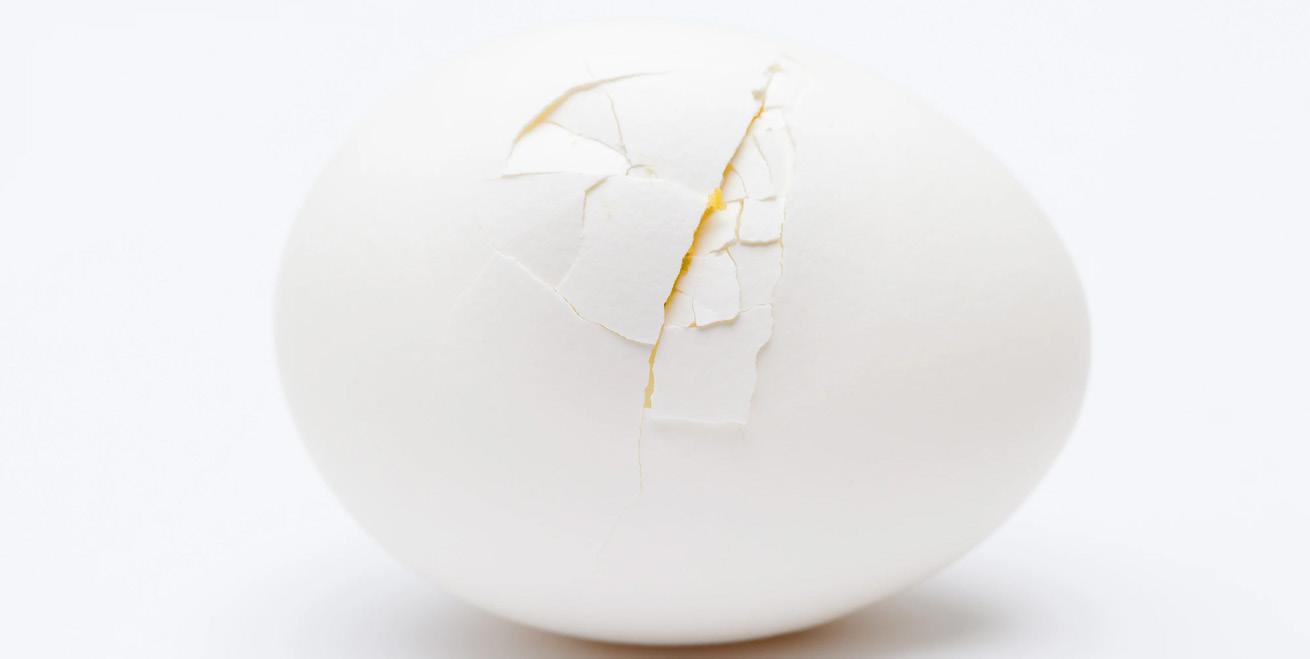
Moreover, the integration of AI-powered computer vision with robotics and automation could lead to fully autonomous egg sorting and packing systems, further streamlining the production process while maintaining stringent quality standards.
For more information, visit www.sanovogroup.com
JULY-SEPTEMBER 2023 LIVESTOCK & POULTRY ME 16 NEWS
COBB GERMANY CELEBRATES 25 YEAR ANNIVERSARY
This year marks the 25year anniversary of Cobb Germany, a distributor of Cobb Europe, serving over 20 countries in Central and Eastern Europe. To commemorate this milestone, the company hosted a celebration in Munich, bringing together numerous colleagues who have helped the distributor be successful.
Cobb Germany was founded in 1998 as a result of an agreement between the Wimex Group and the Cobb Breeding Company. The company was responsible for the production and distribution of Cobb500 TM parent animals in Germany,
Austria and Switzerland. Now with continuous growth and over 170 employees, Cobb Germany operates in over 20 countries, in Central and Eastern Europe.
Leopold Graf von Drechsel –Managing Director of Wimex Group paid tribute to the companions and partners and is pleased with the successful development of Cobb Germany over the past 25 years. He also emphasized the commitment and importance of employees to the success of the company.
Cobb Germany Director James Truscott said the longterm success of the distributor is built upon the company’s
investment in premium genetics and quality products.
“We’ve been fortunate to have the long-time support of our shareholders, allowing us to invest in developing a high-quality product,” Truscott said. “At the same time, Cobb Europe provides us with valuable technical support to continue improving results.”
“Our relationship with Cobb Germany is very strong and they are one of our distributor success stories. We’ve grown together for the last 25 years and look forward to continued partnership for years to come,” said Weatherly.
MUNTERS INITIATES STRATEGIC REVIEW OF EQUIPMENT OFFERING IN FOODTECH
Munters has decided to accelerate the focus on digital growth in FoodTech. Therefore, a strategic review of the equipment offering has been initiated. The strategic review includes exploring different options and may result in partial divestments, although no such decisions have yet been taken.
Munters continuously evaluates the strategic direction as well as offering within the company’s three business areas, AirTech, Data Center Technologies and FoodTech, to achieve increased long-term value creation. Therefore, Munters has decided to accelerate
the focus on digital growth (software, IoT, sensors and controllers) and to initiate a strategic review of the company’s equipment offering in FoodTech. The strategic review includes exploring different options and may result in partial divestments, although no such decisions have yet been made.
“FoodTech has the ambition to become the global leader in connecting and optimizing the supply chain in the food and agriculture sector. The step we take now is an acceleration of our strategy to grow the digital business by exploring different options
for our market leading climate equipment offering,” says President Business area FoodTech, Pia Brantgärde Linder.
“We aim at providing the best future opportunity both for the digital business as well as for the equipment offering in FoodTech, for the benefit of employees, customers and shareholders,” says President and CEO Klas Forsström.
Munters net sales for 2022 amounted to approximately BSEK 10.4, of which the equipment sales within FoodTech accounted for approximately 16%.
JULY-SEPTEMBER 2023 LIVESTOCK & POULTRY ME NEWS 17
ADISSEO’S SPECIALTY ADDITIVES IMPROVE THE ENVIRONMENTAL PERFORMANCE OF SHRIMP FARMING
The carbon footprint of aquaculture production is at the forefront of environmental considerations that preoccupy consumers. Life cycle assessment (LCA) has become the leading tool for identifying key environmental impacts through the production system, from aquafeed production to human consumption of shrimp.
Together with Adisseo, Blonk performed a Life Cycle Assessment (LCA) study to measure the potential of two specialty additives to
reduce the environmental footprint of shrimp farming: Sanacore ® GM, a broad spectrum health promotor, resulting in improved survival and productivity in well documented field trials under a variety of stress and disease conditions, and Aqualyso ® , a lyso-phospholipid based digestive and metabolic enhancer widely used in shrimp feed formulation. The first LCA confirmed that the preventive application of Sanacore ® GM reduced
BETTER FEATHER COVERAGE WITH HY-LINE
the carbon footprint by 38% of shrimp farming exposed to typical disease challenges encountered in Indonesia. The second LCA confirmed the contribution of Aqualyso ® to reducing the global warming impact of feed production by 3% and of shrimp production by 16%.
Both LCA studies have been externally reviewed according to the ISO 14040/14044 standards.
Hy-Line varieties are known throughout the layer industry to have superior feather coverage throughout the life of the bird. This equates to healthier appearance during production, better feed conversion and higher profits at the end of lay.
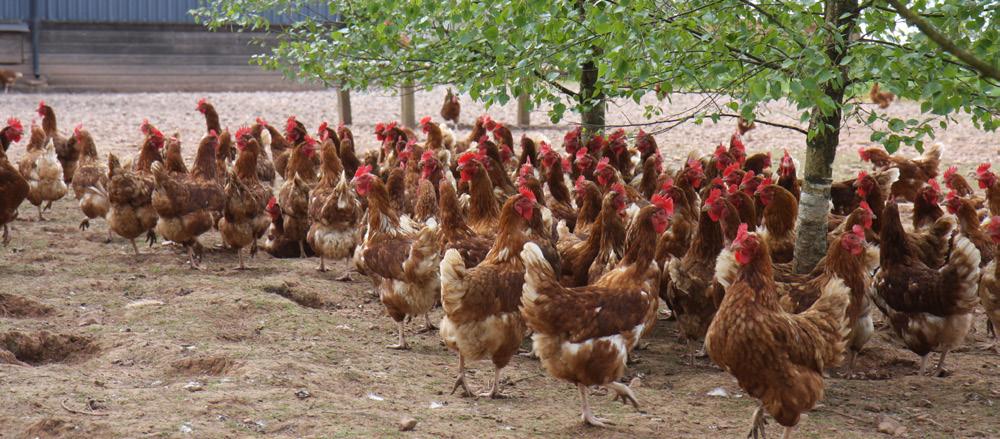
Achieving better feather cover is an enduring progression of selecting generation after generation for improved feather cover. Once achieved, it is hard for others to replicate. Since beginning field tests in the 1950s, Hy-Line has collected performance data from birds in family cages at the commercial level. For 60 generations of selections, Hy-Line genetics have
been selected against feather pecking. For more than 25 generations, HyLine has selected against high residual feed intake, which is associated with poorer feather cover. Feather loss can occur naturally as part of a hen’s aging, but there are many factors that can promote it. Direct reasons for feather loss include: feather pulling by the hen or by other birds, external parasite infestations (mites, fleas, etc.), mechanical abrasion, and molting (induced or spontaneous in old birds). It can be significantly increased by mechanical, nutritional, and environmental conditions, and by poor bird’s health, stress and antagonistic social interactions. Housing type and bird density are also important considerations. Lighting programs, including light type, sources, photoperiod, and light intensity also must be managed
properly to reduce feather loss. The Hy-Line varieties have healthier appearances in production systems. In countries with heightened awareness of animal welfare, the Hy-Line birds appear more animalwelfare friendly. This is especially important for cage-free and freerange systems. With feather pecking and aggression at a minimum in Hy-Line varieties, the birds maintain their feather coverage. Hy-Line birds receive better welfare audit scores for feather coverage and livability. Feather coverage is also important in free-range birds to protect them from the sun and to reduce eggshell color fading.
Birds lacking good feather coverage spend more energy trying to maintain body temperature in both cold and hot climates. This results in increased feed consumption and poorer feed conversion. With feed being the highest-cost input for layers, farmers need birds that will put energy into egg production, not thermal regulation.
JULY-SEPTEMBER 2023 LIVESTOCK & POULTRY ME 18 NEWS
Do you have plans in 1 or 1, ½ to (re)build a new greenhouse or are you curious of the new innovations in your industry ?
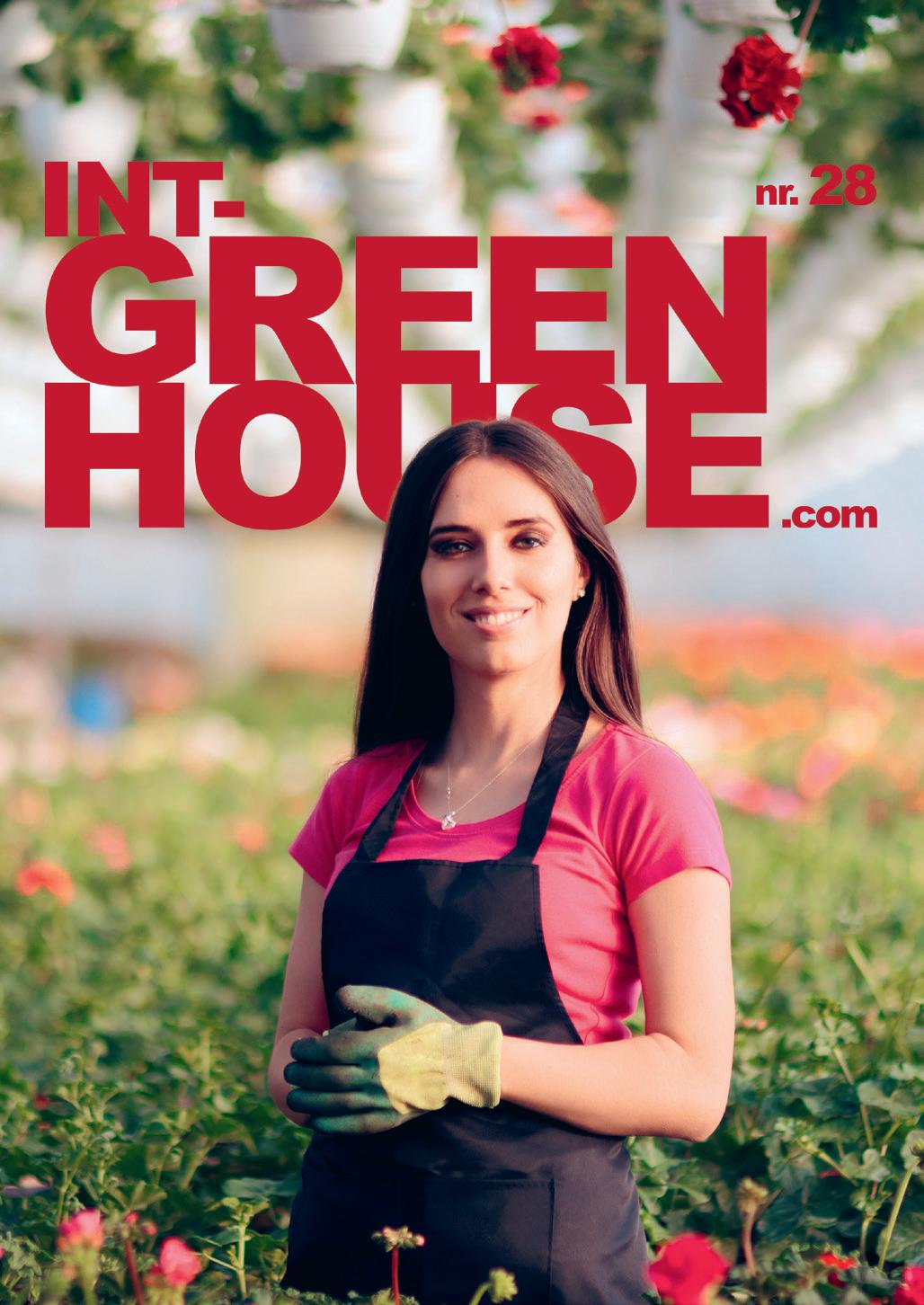
The manual for growers, builders and organisations active in greenhouse building worldwide
e
19 YEARS
The manual for farmers, builders and organisations active in livestockhouse building worldwide

16 YEARS m e
For Farmers with investment plans
Do you have plans in 1 or 1, ½ to (re)build a new livestock house or are you curious of the new innovations in your industry ? Stay informed
Scan & Subscribe here for you free magazine and stay up to date !



YEARS m e y r c c t y r c c t
25
m
y r c c t
&
Stay informed Scan
Subscribe here for you free magazine and stay up to date ! int-greenhouse.com For Growerss with investment plans
livestockhousing.com
ugaatbouwen.com
here !
Monthly videos of your industry ? Scan
SPACE 2023: HIGHLEVEL PARTICIPATION & HIGH-QUALITY CONTENT
SPACE 2023 is preparing in a context of rising energy costs, of generational renewal, of unprecedented high prices for agricultural products, and of climate change. In such a shifting environment and in the face of the structural changes within our agricultural sector, SPACE is becoming an ever more essential event for all professionals to gather information, exchange ideas and find new synergies to continue to develop and adapt animal farming in the regions of Western France.
The international context is also evolving significantly. The war in Ukraine has had a strong impact on the agricultural policies of countries that are dependent on Ukrainian and Russian supplies. The question of food sovereignty has become crucial for many countries, and particularly for developing countries. Our companies and organisations are well equipped to position themselves on these markets. The
international scope of SPACE, which welcomes more than 120 countries every year here in Rennes, is a clear demonstration of our ability to offer solutions to this global food challenge. Many delegations from all over the world are expected to attend again this year, in particular from Europe, the Middle East and of course Western and Central Africa.
A range of exhibitors
The number of exhibitors registered at SPACE is always very high. On 16 May, almost 1,100 exhibitors from 36 countries, including 177 new ones (76 of which are international companies) were expected to attend the Exhibition.
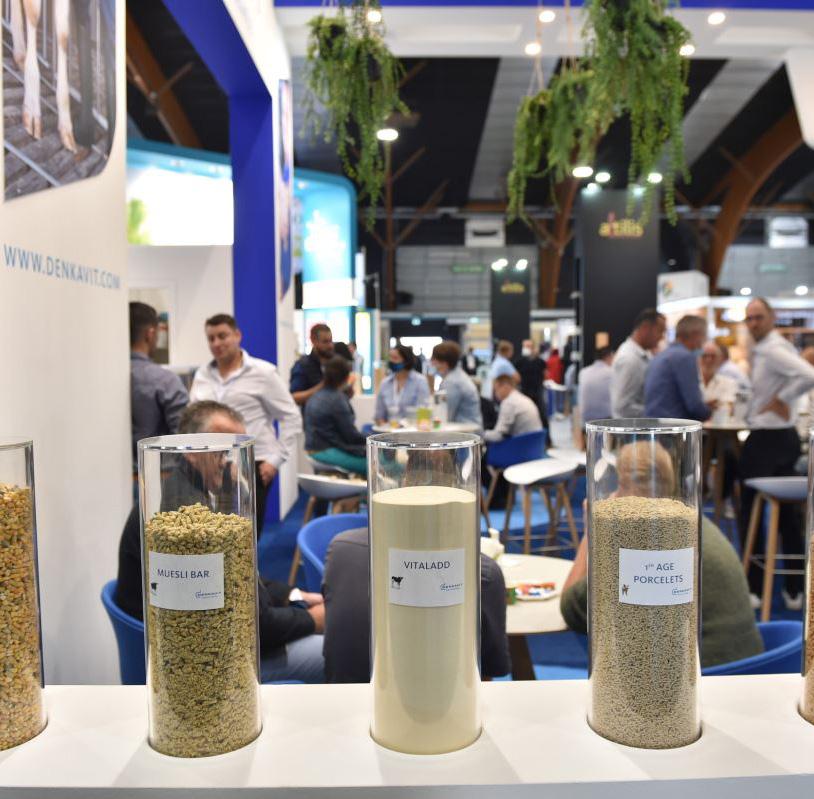
These companies from all over the world will share their expertise and innovations to inspire and open up new perspectives for animal farming professionals.

To accompany the dynamic of the registrations and the evolving
stand requests, the layout of the stands will be reorganised this year to meet the needs of companies in terms of both surface area and sectors of activity. SPACE has the capacity to organise the activities in such a way as to make it easier for visitors to find what they are looking for and to find their way around the stands. Therefore, Hall 4 will be entirely dedicated to energy and environmental solution providers. Hall 3 will be dedicated to Research and Development, start-ups and to the Espace for the Future. In Hall 7, alongside equipment suppliers for pig farming, visitors will find livestock building suppliers who were previously located in Hall 3. The area dedicated to sheep (previously located near Gate B) will also be relocated, as this year it will be located between Hall 1 and Hall 7 for better visibility.
Let’s meet at SPACE 2023: from Tuesday 12 to Thursday 14 September, at Rennes Parc-Expo – France
JULY-SEPTEMBER 2023 LIVESTOCK & POULTRY ME
20 SPACE SHOW PREVIEW

SOMMET DE L’ELEVAGE 2023, SHAPING THE AGRICULTURE OF TOMORROW
The 32 nd edition of the SOMMET DE L’ELEVAGE will be held from the 3 rd to 6 th October 2023 in ClermontFerrand, France. Over 1,500 exhibitors, 2,000 animals and 100,000 farming industry visitors are expected at this event, recognised as being one of the biggest livestock shows in the world.


The SOMMET DE L'ELEVAGE is a not-to-be-missed event for farmers and agri-related industries. It has, over the years, built a solid reputation for the
quality of the animals on show, selected for their high genetic value, including beef and dairy cattle, sheep and horses. In
total, more than 70 breeds can be found at the SOMMET in judging or on show, the finest in French livestock genetics.
22 SOMMET DE L’ELEVAGE SHOW PREVIEW LIVESTOCK & POULTRY ME JULY-SEPTEMBER 2023
Over the years, the SOMMET has established an international reputation as being resolutely turned to foreign markets and visitors. This year, that will feature Georgia as the guest of honour, should see a marked return of many foreign visitors to the show's aisles.
We must not overlook either that the SOMMET is also a showcase offering a comprehensive product and service offer for every sector of livestock production and farming, and it’s a recognised international business forum (over 100,000 sales transactions on average are signed each year during the show), plus a rich source of information with 100 conferences and symposiums proposed during the 4 days of the show, covering the hot topics in agriculture and the latest farming news.


With 1 month to go before the opening of the SOMMET,
Jacques Chazalet, President of the show, gives his impressions: "11 months after the last show, the satisfaction and feeling are the same as ever. The SOMMET is now recognised as the not-tobe-missed annual farm show! A
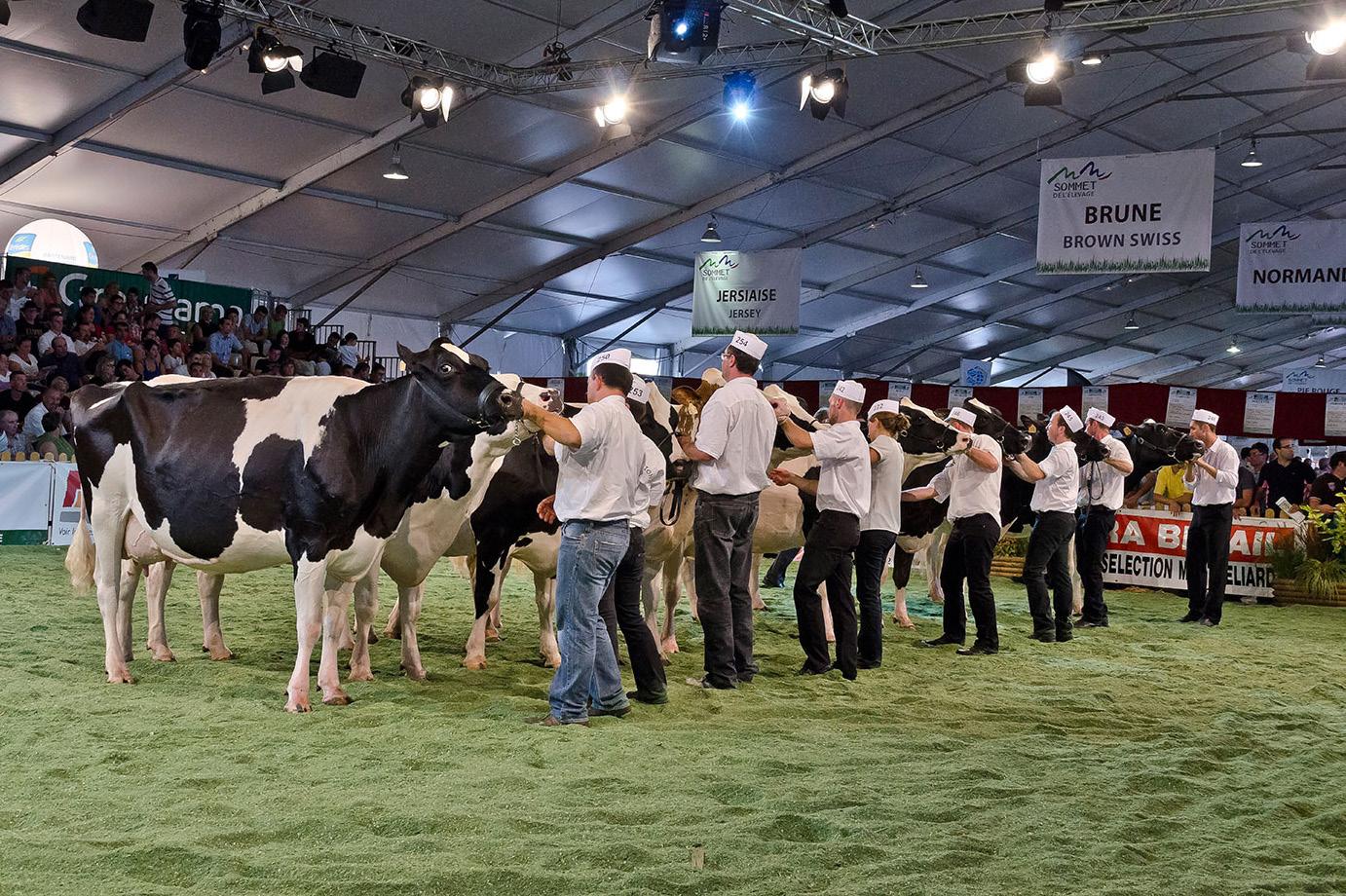
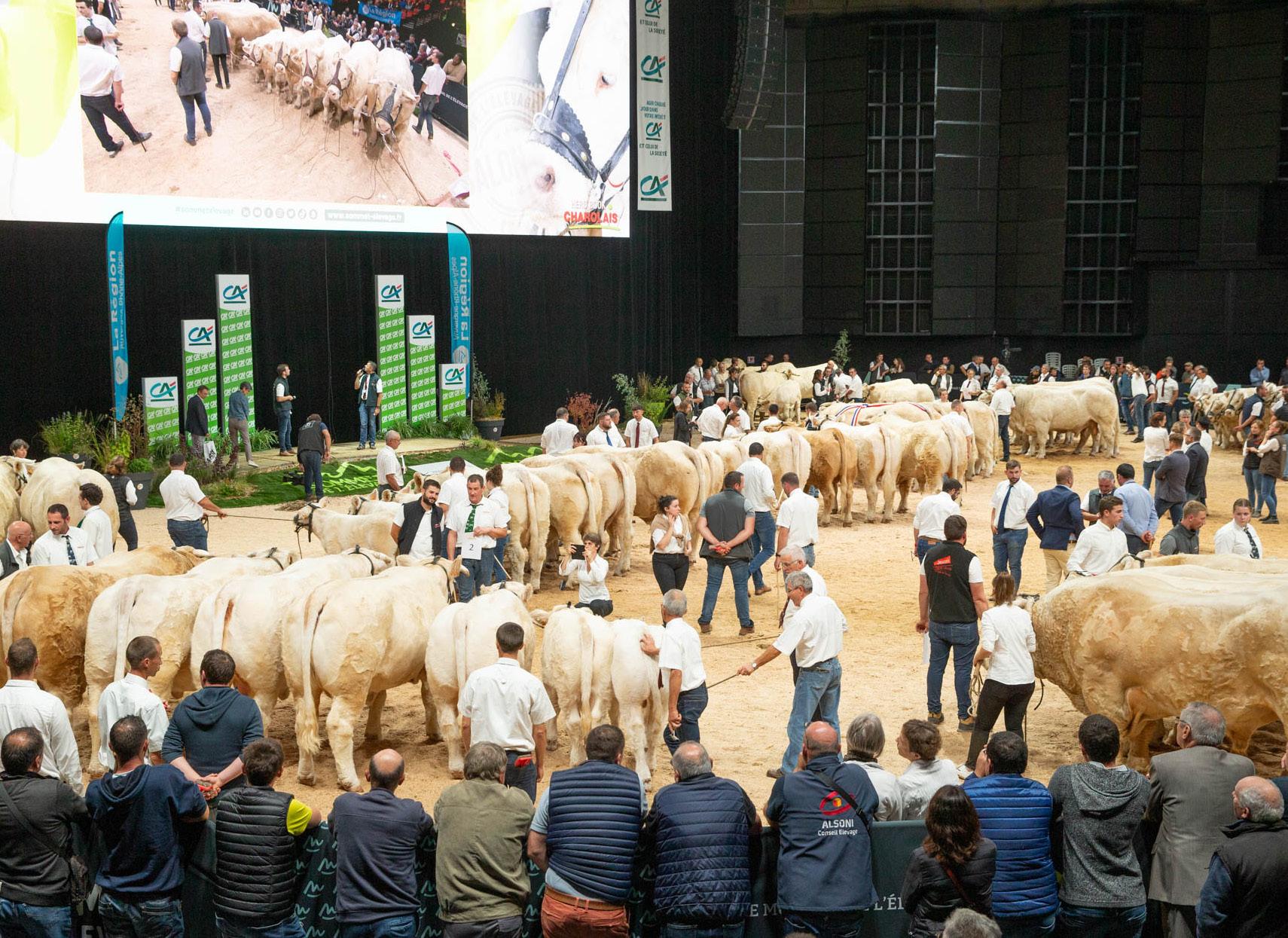
record number of exhibitors and visitors are expected this year. To date, we are almost fully booked in terms of stand bookings. Our objective of 1,550 exhibitors should be reached for this new edition of the show.”
Far more than just a trade forum, the SOMMET DE L’ELEVAGE is also a fantastic opportunity to highlight all the issues at stake in agriculture.
And the SOMMET intends becoming the world forum for sustainable livestock farming for the next decade.
For more information, visit www.sommet-elevage.fr
LIVESTOCK & POULTRY ME JULY-SEPTEMBER 2023
SOMMET DE L’ELEVAGE SHOW PREVIEW 23
JOIN INDUSTRY LEADERS AT THE CENTER OF THE FASTEST GROWING GLOBAL ECONOMY AND PARTICIPATE IN THE 40 TH ANNIVERSARY OF THE LARGEST AGRICULTURE EXHIBITION IN THE MIDDLE EAST REGION
The 40th edition of the international exhibition for Agriculture, Food, Aquaculture, Packaging, Agro-industry, Dairy, Poultry, Livestock, Honey and Dates is the largest B2B event of the agriculture sector in the region showcasing leading technologies and solutions, cutting-edge engineering, and innovations. It is the largest Agriculture B2B event serving in the region showcasing leading products, cutting-edge technologies, and innovations to meet the needs

of the high-growth sectors with Unprecedented Sustained Success.
Saudi Agriculture is held under the patronage of the Saudi Ministry of Environment, Water and Agriculture to source the needs of the trade buyers and bring together businessmen, industry professionals, decisionmakers, and sellers to develop their businesses at the center of the largest market in the Middle East. The exhibition and related events offer an ideal platform for widespread collaboration
between farm owners, local and international business leaders actively participating to develop and grow the sector.
US$ 29.72 billion are contributed by the agriculture sector to the kingdom’s GDP. Multiple sub sectors, including: Agrifood, Poultry, Livestock, Mills, Animal Nutrition & Health, Dairy, Aquaculture, Food Processing & Packaging and latest Agricultural technologies are experiencing rapid growth. High growth sub-sectors include: Aquaculture, Organic Farming, Honey, Dates, Food Processing and
JULY-SEPTEMBER 2023 LIVESTOCK & POULTRY ME 24 SAUDI AGRICULTURE SHOW PREVIEW
Packaging.
A major expansion is underway in multiple segments in the country. Aquaculture production jumped by 183% during the past 5 years from 30,000 tons to 85,000 tons. During the same period, broiler chickens’ production grew to over 60% of domestic demand. Greenhouse’s production increased by 58% from 257,000 tons to about 407,000 tons. Organic food farming increased by 18% to 52.800 tons during the same period.
The Saudi Agriculture Trade exhibition is incorporated with 3 more shows being Saudi Agrofood, The 28th International Trade Show for Agro Food & Organic Food, Ingredients, & Technologies, Saudi Foodpack, The 11th International Trade Show for
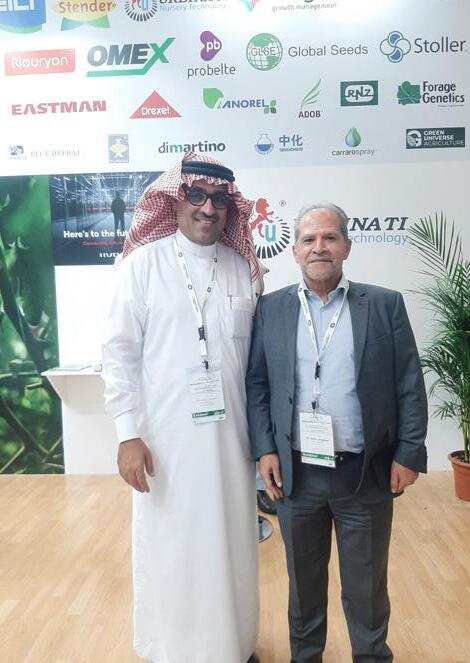
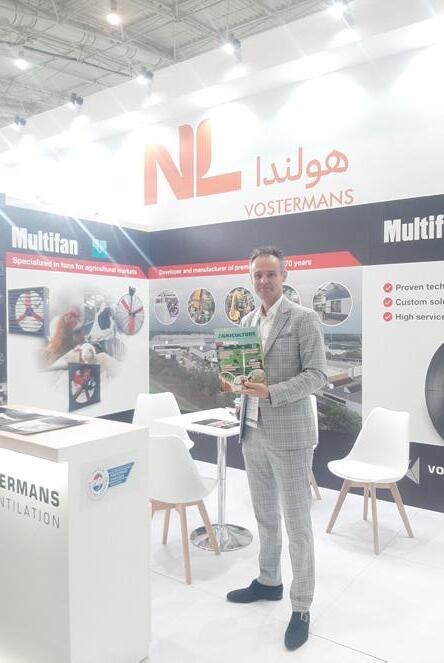
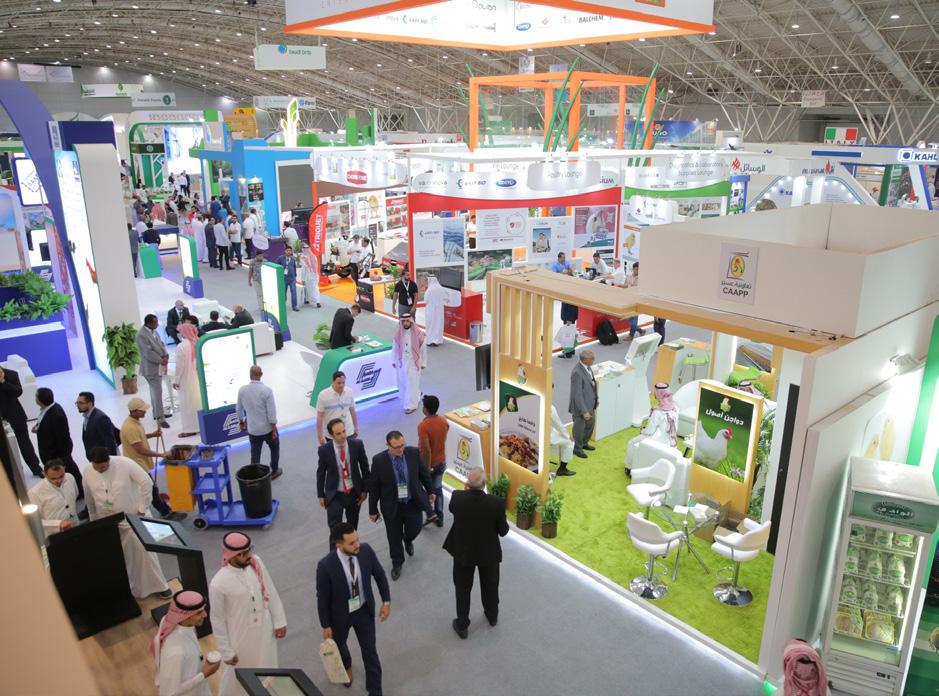
Food Processing and Packaging, and Saudi Aquaculture, The 5th International Trade Show for Aquaculture.

The latest Advancements in agriculture technologies and solutions are targeted by Saudi Agriculture 2023, Drones & Aerial Imaging are amongst the latest needed technologies invited to participate in Saudi Agriculture 2023. Also invited to participate are Robotics in green houses which are playing a growing role in modern greenhouses along with sensors and agricultural software and applications that enhance planning and control for efficient controlled farming.
The Saudi Agriculture Trade Exhibition includes the participation of over 360 international exhibitors from over 15 countries to be,

including the Netherlands, Italy, Turkey, Spain, China, India, UK, USA, Russia, Pakistan, Portugal, Canada, Germany, France, Ireland, Belgium, Denmark and more.
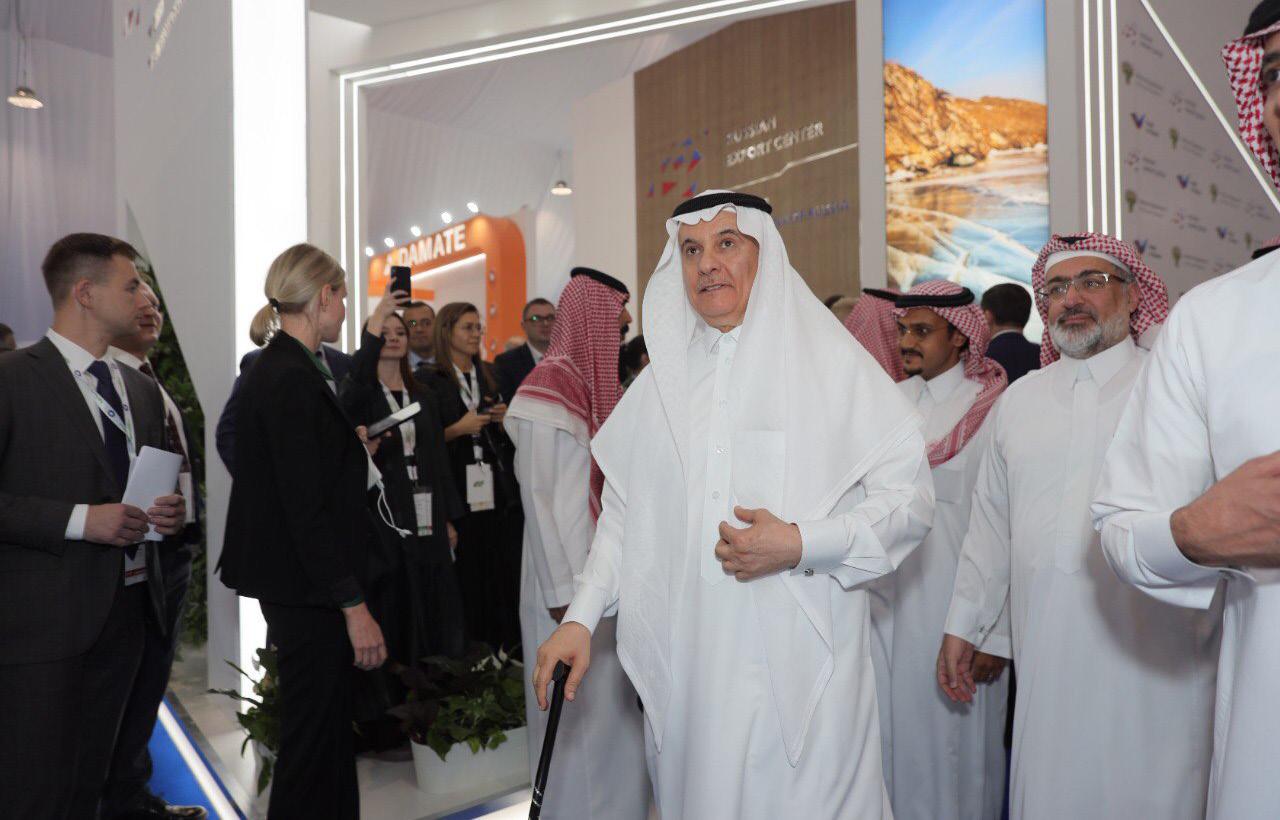
JULY-SEPTEMBER 2023 LIVESTOCK & POULTRY ME
The 40th SaudiAgriculture 2023 is held from 23 – 26 October 2023, from 1:00 pm to 09:30 pm at the Riyadh International Convention & Exhibition Center in Riyadh, SaudiArabia.
SAUDI AGRICULTURE SHOW PREVIEW 25
AGRAME 2023: TO EXPLORE MENA'S PATH TO FOOD SECURITY
Under the patronage of the UAE Ministry of Climate Change and Environment; AgraME, the region's most advanced agriculture event, will explore the Middle East and North Africa's pathway to food security.
More than 4000 global and local industry professionals will meet in Dubai to showcase their products and solutions aimed at achieving self-reliance in food production. Running for 14 years, AgraME will take place on 9-10 October, 2023 at the Dubai World Trade Centre.


Throughout the MENA region, sustainable food production is now a key pillar of national agendas, with industry, governments and
policymakers looking to leverage the power of new technology and financial models, as well as inward investment, to address the issue. The entire industry ecosystem and its multi-verticals will be under the AgraME 2023 spotlight, where new innovations will be on display and experts will provide keen insights into the agricultural and food production of the future.
The exhibition and conference will cover key areas including cutting-edge technologies and innovation, cultivation in controlled environments, seed science, and investment opportunities in the region, the impact of MENA foodtech hubs and the future of food
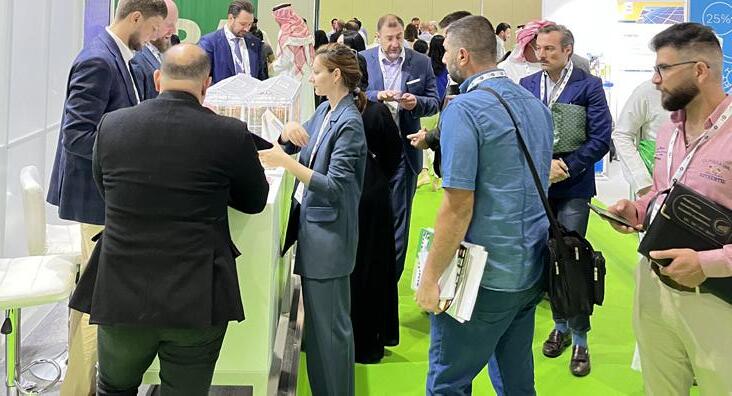
security.
Last year more than 4,000 local and international industry professionals attended the show. The event was also co-presented alongside AgroFarm and three other key vertical event platforms: AquaME, AgraME Fresh, and the newly launched HortiME, a dedicated exhibition area and conference stream that represents the first vertical farming event in the Middle East, which addressed critical challenges around the arid nature of the land and the technologies and processes which are advancing agricultural processes in the region.
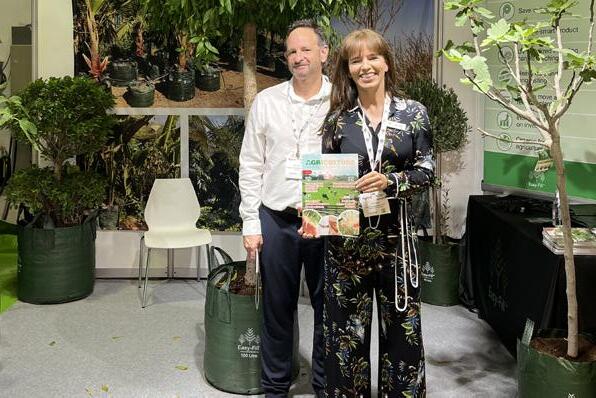

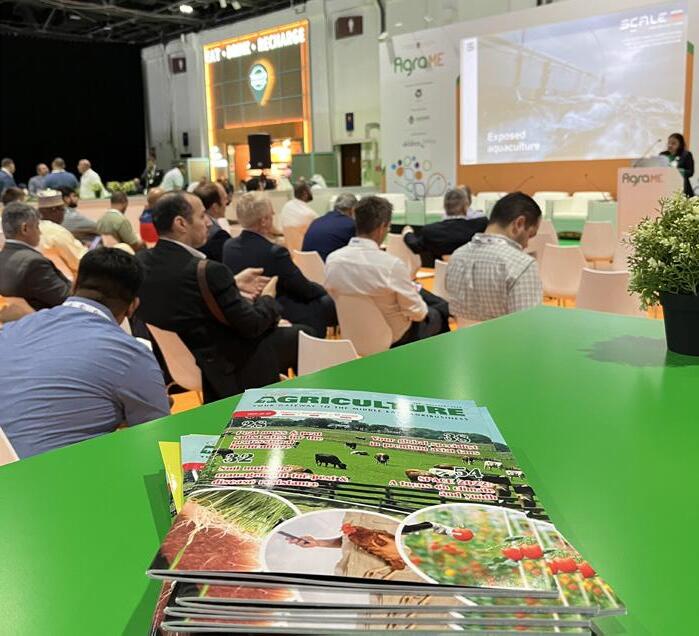

JULY-SEPTEMBER 2023 LIVESTOCK & POULTRY ME
26 AGRA ME SHOW PREVIEW
HUVECHECK ® HETASCA: A NOVEL TOOL FOR MONITORED DEWORMING PROGRAMS IN CHICKENS
Roundworm infections are an increasing concern for poultry producers, especially in cage-free housing systems. Next to losses in production, worms can act as a vector for other diseases such as Salmonella spp. and Histomonas meleagridis, the latter being the causative agent of blackhead disease.

Histomonas meleagridis is a protozoal pathogen mainly known to cause high mortality in turkeys, but in recent years more and more diagnosed in chickens (layers and breeders) causing the typical caecal and liver
lesions, or as an underlying cause of chronic E. coli mortality.
Prevention of this disease is key to avoid outbreaks for which limited treatment options exist. One aspect of prevention is completely stopping the replication and infection with Heterakis gallinarum in an early phase, even before it is or can be detected by EPC or necropsy.
Serology with HuveCheck Hetasca can detect worm infections early in the rearing phase of layers and broiler breeders. Deworming at the end of the rearing period
will allow the worm eggs to spread and hatch undetected in such a way to spread Histomonas meleagridis in the flock without any clinical symptoms. Later on, when the birds go into production, outbreaks can occur. This was demonstrated using HuveCheck Hetasca where a correlation was found between positive serologic flocks during rearing and blackhead disease outbreaks during the production phase. To prevent Histomonas meleagridis outbreaks during production, it is critical to implement a monitored deworming program during rearing with HuveCheck Hetasca instead of, as is commonly practiced today, deworming at the end of the rearing period.
For more information, visit www.huvepharma.com

LIVESTOCK & POULTRY ME
POULTRY DEWORMING 27
JULY-SEPTEMBER 2023
Dr. T. Kotaiah (drkotaiah@indbropoultry.com) Indbro Research & Breeding Farms Pvt.Ltd., Hyderabad, India

The performance of any individual depends on it’s genetic makeup + the environment in which it lives. The environment is defined as everything other than genetic. The superiority of a layer bird Layers are judged by number of eggs + the egg size+ feed consumption+ the flock depletion. The broiler bird is judged by weight gain+feed efficiency+ depletion. An integrated broiler producer adds breeder performance and yield characteristics.
Commercial chicks are Hybrids produced by crossing closed populations with known hybrid vigor. Selective breeding with in the lines is undertaken to improve the performance. Approaching the genetics limits and the Genotype X environmental interactions may limit the improvement. The layer are being selected to persistent laying+ better shell quality after 72 weeks. Heavier broilers require
BREEDING FOR ADAPTABILITY
better bone strength. A Superior bird in moderate climate becomes inferior to it’s competitor in hot climates. Environment controlled houses are expensive to build and run. India works on open sided houses with natural airflow and fogging. The housing cost per bird is very less. In 2023, we realise that 2020 goals were achieved and the prospectus of 2030 will be realistic.
The non genetic or the Environmental factors are1. Housing Environment –Most of the poultry breeding work is done in advanced countries since 100 years in environment controlled houses.




The cost of open sided house for 20,000sft. costs 2.0million Indian Rupees where as a controlled house costs 6.00million. To offset the three times high capital cost,
Current production levels & Goals of improvement
Let us look at the expected changes that could take place by 2030 if the current breeding policy continues. The expected performance levels are projected below.
Broilers 2020 2030 Day at slaughter 35 30 FCR 1.6 1.3 Mortality 2.0% 1.0% Breast meat 30 % 33% Layers 2020 2030 Eggs to 72 weeks 330 340 Eggs to 100 weeks 500 510 Average Egg weight 60 61 Egg Mass 72wk 19.8 20.74
28 POULTRY BREEDING JULY-SEPTEMBER 2023 LIVESTOCK & POULTRY ME
Low cost open sided broiler house - India
Open sided layer house - India
Enviorment controlled house
Open sided broiler house
Modern enviorment controlled broiler house
the number of birds per house is increased from 20,000 to 40,000 birds. Increase in density demands additional care and investments on mechanical feeding etc.
2. Quality of feed & price
• To exploit the genetic capability of the bird, improvements are made in the feed.
• Energy levels in broiler feed enhanced from 2800K.Cal/Kg feed to 3200K.cal.
• Lysine in broiler feed 0.8 to 1.3%
• Methionine level in feed enhanced from 0.35 to 0.50%
• Vitamin A- 8000 to 16000IU per Kg.
• Vitamin D3 from 1600 to 3500IU per Kg.
• Aflatoxin levels of feed being monitored and maintained below 10PPB.
Diversion of Maize to Ethonol production has reduced the availability and increased the prices. The price of Soya and other ingredients are going up with demand. If the trend continues only the second grade grain will be available for poultry. Hence, the feed materials with lower nutrient levels and with higher toxin levels have to be accepted by the poultry industry.
The above factors are increasing the cost of inputs and ultimately the production cost. The risk of poultry keeping is on the increase. The large farmers and integrators go for feed processing like steaming, pelleting and crumbling. Steaming increases the bioavailability and reduces the risk of disease contamination. A small farmer uses only a grinder and sometimes a mixer. The feed is in the form of mash. Many small farmers buy poultry feed concentrate with additives and add ground Maize at their end.
3. Microbial Challenge Vaccines are available against
many known Viral Diseases. The number of vaccines and the cost of vaccination has gone up but the problems are preventable. The bacterial problems like E.Coli and Mycoplasma, get transmitted fast with untreated lower quality water and air movement around the small farms erected in clusters. The bacteria get carried by the caretakers also.
Poultry breeding work is undertaken in India in open sided houses, with available feed ingredients and under no special care to prevent common water born problems. The birds bred under controlled houses by the multinational companies are also available.
The difference in performance response of the birds under the above three non genetic situations described are studied.
The birds bred under moderate climates are unable to take the adverse environment (High temperature, Low quality feed and Common Bacterial infections). A little change in day temperatures and less care in management is making the whole flock suffer. The problems are compounded in high density houses and larger flocks are at greater financial risk.
These infections can be treated by using antibiotics. But, the consumer awareness about the transmissible resistance to antibiotics are magnifying the dangers of usage and are being prohibited.
Breeding for Adaptability
Instead of getting a bird bred in moderate climates and providing the environment that suits the bird, Can we breed the birds under a particular set of acceptable environment systems? Will the adaptability be built in as a genetic trait, which will make the bird tolerate some of the above environment situations?
Breed the birds under the climate where it should perform or breed them under sub-optimal conditions, so that they will perform well when better environment is provided. We cannot risk the valuable bids under selection.
Breeding under the practical conditions, where we need the birds to perform with proper biosecurity to protect the birds from vertically transmitted problems is the sure way of achieving adaptability. Practice good biosecurity measures to protect the valube breeding birds.
Indian Poultry Industry
Indian poultry farming has been unique in many ways. The present day “open sided” huge layer houses with capacities up to 50,000 birds per house have evolved over a period of time by trial and error. The feed formulations are based on the locally available ingredients with “least cost” calculation. The feed is mixed “on farm” and is mostly mash. The laying farms are multi age groups with 3 or 4 replacements per year. The experiments with low investment houses and least cost feed formulations using unconventional feed ingredients have helped in production of eggs at prices lowest in the world. The water given to the birds are directly pumped from the bore wells and is not demineralized or decontaminated.
The broiler farms do not exceed a capacity of 20,000 birds and the houses are open sided and less expensive. The batches are reared on “All in All out” basis. The broiler feed also is less dense compared to the other parts of the world. Many small

JULY-SEPTEMBER 2023 LIVESTOCK & POULTRY ME POULTRY BREEDING 29
farmers buy the concentrate mixture and mix their own grounded Maize and other grains to lower the feed cost. Mash feed is not steamed. The water quality is never judged and the bore well water with some bacterial contamination is accepted.
Few breeding units started breeding the birds in India with all the genetic technology in place but under ordinary housing, feeding lower quality available ingredients and with untreated water. The import of genetic stocks from multinational breeding company continues. The birds bred in India are found to have distinct advantage over the birds bred outside the country under stipulated environment with the best quality of feed and water. The main advantage with Indian bred birds, the farmer talks about is “Adaptability” of the birds. The farmer’s concerns are: If the flock gets in to toxicity, How fast the flock recovers? How much drop in production will be there when the temperature crosses 40C? Will the flock come back fast if the temperature is reduced? How well the bird can take least cost feed, which has low energy & high fiber. Mycoplasma and E.Coli can surface with change in climates. How well the flock takes the infections? How fast the flock recovers after the treatment and to what level of earlier production the flock would reach?
The broiler industry also has the similar concerns. Will the broilers survive and grow in summer months? There are certain months in a year where the broiler prices are bound to be low (due to festivals, where certain communities abstain from eating meat). These are “Sure to Loose” months in the live bird market. The broiler producer wants to invest less by low cost feed and loose less. Will the birds give optimum performance with the low dense feed? The chick production cannot be stopped by integrators.
Poultry Breeding in India
Indian poultry industry has decided to be self sufficient in breeding stocks also about 40 years ago and went in for pure line breeding since 1970s. Most of the poultry breeders and many poultry technicians in India were skeptical. Can we do this? The industry and the Government has kept an “open attitude”. The import of the outside brands are allowed in to the country and there are no special protections or incentives to Indian breeders. It has been interesting to watch the breeding business in India. Over 80% of the poultry farms in the country house Indian bred layers tough imported birds of of the leading brands and are available at the same price. 75% of the broilers produced are bred in India. 95% of the rest of
35% are reared by Integrators providing high dense feed and better health care. Only 5% of the day old broiler chicks sold to the farmer are from imported origin. The broiler industry also produces the results comparable to any other developed country in terms of growth, feed efficiency and mortality with birds bred in India.
The requirements of a successful breeding programme are: Breeding Stocks, Facilities & Manpower, Breeding Technique, Money and a bit of Luck.
Getting the pure lines with known combination by the established breeders and setting up a breeding facility under the same lines as the industry works is the best proposition. The breeding stocks are to be built up. Otherwise the pure line birds may not behave in the same way and take 2 or 3 generations to get back to acceptable level of performance. It will be like a new set of genes coming in to play in a different environment. Investment on Infrastructure is relatively low in countries like India, where the basic raw material is locally available.
Individual data collection on large number of birds, which is the main job in poultry breeding is manual and manpower less expensive in India. India has the technology, technical and non technical man power with reasonable wages. The money can be raised to start with.
The Results
The poultry breeding in India is successful. The market share of Indian bred birds is more than imported birds. The advantages are adapting to the climate fluctuations, accept average feed and bouncing back in to production after a problem with less quality feed,
PARAMETER INDIAN BRED IMPORTED Eggs: average feed Good feed 300 310 285 305 Product drop in high temp 5 – 10 % 20 – 30 % Recovery 10 days 30 days Feed toxicity Moderate Severe Recovery Fast Slow M.G & E .Coli effect Mild Serious Recovery after medication Fast Slow
JULY-SEPTEMBER 2023 LIVESTOCK & POULTRY ME 30 POULTRY BREEDING
The requirements of a successful breeding programme are: Breeding Stocks, Facilities & Manpower, Breeding Technique, Money and a bit of Luck.
The Broiler Random sample tests conducted by Government. Results of a test where both have participated are given below (RST, Gurgaon 2006). More data is not available due to lack of participation.
reasonable market weight with mash. But the results in terms of average bodyweight, Feed conversion and mortality were distinctly in favor of Indian bred birds.
5. Exposure to low level infection of Micoplasma and Coliforms
high temperatures and disease challenge. The broiler bird has a short life of less than 40days. Typical genotype environment interaction can be seen in the broiler performance. The difference in performance of broilers is more perceivable in a short time.
The results of such a situation are typically presented above.
Imported & Indian bred broilers were reared under two outside temperatures, One at above 40C and the other at around 30C. The weight gain of the imported brand was very poor in hot climate (1.4Kg only), though there is genetic capability to achieve 2.3Kg weight in 40days when the climate was moderate. There was a large difference in their capacity to consume feed at different temperatures. The Indian bred birds on the other hand managed to eat and gain weight even in hot climates. The mortality and

the Feed conversion are in favor of Indian bred birds even under moderate climates.
4. Both Indian and Imported birds were tested under two feed regimens
One is high energy feed processed in to Crumps & Pellets, fed in 3 phase feeding (pre starter for 10 days, starter for 10 days followed by finisher). The second is ordinary mash feed, fed as starter mash up to 23 days and finisher mash after words. Both birds took 5days extra to gain
Indian bred and Imported birds were compared in a mixed rearing trial. Both the chicks were reared in the same poultry house after thorough cleaning and decontamination. Lab tests showed that the Indian bred chicks were positive for Mycoplasma and nonspecific Coliform infections, which were not known to be dangerous for poultry. The imported birds were MG negative and were free from Coliform bacteria when started. The initial mortality of the Indian chicks was higher. But the later mortality of imported birds was very high leading to poorer performance in the end.
Imported Indian Bred Chick weight 44 gms 42 gms Weight at 6weeks 1620gms 1870 FCR at 6weeks 1.83 1.79 Feed consumed 2.96 Kg 3.35 Kg Dressing% 77.29 75.98
Description Imported Indian MG status Negative Positive Colifirms Negative Positive 35 days weight 1308gms 1536gms Feed conversion 2.20 1.90 1 st wk mortality 0.6% 2.23% 5 th wk mortality 5.10% 4.0% POULTRY BREEDING 31 JULY-SEPTEMBER 2023 LIVESTOCK & POULTRY ME
PREPARING THE LIFELONG LAYER
Well begun is half done, an old saying which also is true for egg producers as a good quality pullet helps to reach the targets set for the productive life of laying hens.
By Rafael Lera, Poultry Veterinarian, Hendrix Genetics Layers
The pullet rearer has about 17 weeks to develop this tiny day-old chick into a ready to lay laying hen. The productive life of a laying hen has increased drastically over the past decades and because of balanced genetic selection this is still increasing 1 week with every new flock that enters the poultry house. Keeping laying hens all the way up to 100 weeks of age
without molting is no longer exceptional, it is not the global standard yet, but more and more proven results are clearly there. A good quality pullet is essential to get the best out of your flock, in this technical paper we aim to describe some of the main objectives and targets to be reached during the rearing period.

The rearing period is of major importance for the performance of the flock later in life. The productivity of a flock depends to a large extent on the successful
attainment of bodyweight targets from an early age. Also egg size profiles during lay and the feather cover during the productive period are influenced by the development of the pullets.
During first weeks in rearing, management should focus on rapid and steady chick growth while the second half of the rearing period is the right time to work on developing feed intake capacity. In addition to this, achieving a proper uniformity within a flock is also
32 LAYING HENS
JULY-SEPTEMBER 2023 LIVESTOCK & POULTRY ME
essential to obtain good laying performances.
The different chick development phases in the rearing period
The main objectives during the brooding period are:
• Rapid growth to reach body weight target at 5 weeks of age
• Good uniformity from the beginning
• Maintaining excellent livability
From day old to transfer, the chicks will grow slowly, and organ development occurs at various ages. A lack of growth during any of the growth stages can have a detrimental impact on the 17-week-old pullet quality. Any delay in growth at 4-5 weeks of age, will be reflected in a reduction in bodyweight at 16 weeks and then in performance, particularly in mean egg weight in temperate climates. Keep in mind that two pullets with the same bodyweight haven’t necessarily developed the same body composition, it all depends on the growth curve. Good growth curves result in good pullet development. The growth and developments of laying hens is split in the following stages (visualized in graph 1):

• The first 3 weeks are devoted to a rapid development of the organs of the digestive tract and the immune system.
• From week 3 to week 6, skeleton and muscles are rapidly growing. Bodyweight at 5/6 weeks is the most important determinant of pullet quality. Any delay in growth at this stage is harmful to the birds, as it will have a detrimental impact on pullet quality and body composition, which will in return impact negatively the birds’ performance.
• From week 7 to week 15 growth rate is starting to slow down. By 12 weeks skeleton is almost completely developed and the pullets are practically fully grown in terms of size.
• The final stage is characterized by ovary development and rapid growth of the reproductive tract. Sexual hormonal regulation takes place around 18 weeks and leads to sexual maturity around this age. Medullary bone also develops during this period, about 2 weeks before first egg is laid.
At all stages of chick development, flock uniformity needs to be reviewed. The objective is to have a very high uniformity to facilitate flock management and proper light stimulation. It is well known that low flock uniformity leads to poor egg laying performance: slow onset of lay, poor and late peak of production and increased number of small eggs. The number of feeders and drinkers, feed distribution, the presentation of the feed and the farmers’ management are strong
contributors to ensure uniformity. Heterogeneity at early age has a negative impact on uniformity at the end of the rearing period, before birds are transferred.
Building the potential during the growing period
After a good start during the brooding period, the main goal of the growing period is to ensure the full development of the birds so that they reach their highest potential for producing eggs later in life. The objectives during the growing period are:
• to establish a good feeding behavior pattern
• to develop the digestive tract (crop and gizzard)
• to obtain a good uniformity of at least 80%
• to achieve the recommended body weight at sexual maturity
These objectives can be achieved by:
• correct stocking density, proper feeding and drinking equipment and housing conditions
• a lighting program adapted to the rearing conditions
JULY-SEPTEMBER 2023 LIVESTOCK & POULTRY ME LAYING HENS 33
Graph 1
• a good standard of beak treatment (when local legislation allows the application of beak treatment)
• correct disease prevention: good biosecurity and adapted vaccination program
• good management of the feeding program and feeding techniques
We will highlight feeding techniques and the monitoring of chick development in this article.
Feeding Technique
Feed management in rearing has an impact on feed consumption later in production. The idea is to develop the digestive tract during the rearing phase to prepare the birds to eat enough during the laying phase, especially immediately after transfer, when feed intake should increase sharply in just a few weeks.
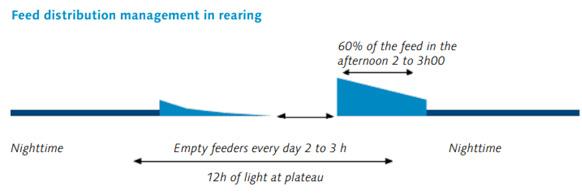
The crop is the bird’s feed storage organ. Rapid feed consumption during rearing leads to crop development. Therefore, feed consumption during the rearing period needs to be fast enough and eating speed will depend mainly on feeding times and feed texture. Birds naturally eat earlier in the morning, when their digestive tract is empty, and in the evening, to satisfy their energy needs throughout
the night. It is important to take advantage of this natural behavior and get empty feeders in the middle of the day. The feeding techniques used between 5 and 16 weeks are designed to avoid the build-up of fine particles in the feeders and to encourage crop development through rapid feed intake. By nature, chickens are grain eaters with a strong preference for coarse particles. Fine particles are more difficult for birds to eat; therefore, they spend more energy for the same quantity consumed. The accumulation of fine particles in the feeding system leads to underconsumption. To ensure the birds can get all the necessary nutrients of the diet, it is essential that the feeders are emptied every day from week 5 of age onwards. Even at earlier age it is recommended that chicks get used to empty the feeders at least once per week. This “empty feeder” rule applies equally to pullets and layers.
To encourage rapid consumption, we recommend that the complete daily ration should be given about 2 to 3 hours before “lights off”. At “lights on”, because the digestive system is empty, the birds will eat finer particles. If the feeding
system does not allow the entire daily ration to be given in one distribution, distribute 60% of the daily ration in the early afternoon and the 40% in the morning at “lights on”. This feeding routine can be started between 4 and 8 weeks according to the feeding equipment in use. The length of time, during which the feeders are empty, should be gradually increased, so that by around 1012 weeks of age the feeders are empty for a minimum of 2 to 3 hours per day.
Pullet feed presented in coarse particles helps gizzard development. We recommend using a feeding system which distributes feed rapidly throughout the house and enables the birds to finish all the feed distributed each day. This encourages the birds’ intake capacity and avoids fine particle accumulation. Feed troughs with rapid chains are the best option, with the easiest feed intake control. If pan or tube feeders are used, they should be adapted specifically for this technique.
Developing the gastrointestinal tract and feed intake capacity, by both developing the gizzard for optimal digestion and by training the pullets to eat, are key to help them to rapidly increase their feed consumption in the first few
JULY-SEPTEMBER 2023 LIVESTOCK & POULTRY ME 34 LAYING HENS
weeks of lay and therefore a much smoother transfer towards the laying phase.
Monitoring development
Weekly measurement of growth is an absolute must to check the actual development of the flock. Early detection of abnormal weight gain is of extreme importance to determine what corrective actions must be taken. Late attempts to correct low bodyweight are not efficient at improving body composition and frame size. In addition to this, monitoring of body weight is essential to calculate the appropriate quantity of feed to be issued, as requirements vary according to the energy level of the diet as well as the house temperature and the health status of the flock. Besides the average body weight of the flock it is also important to calculate its uniformity. The objective is to have a high uniformity to ensure an even response across the flock to management techniques, treatments and especially to light stimulation. If all the birds within a flock have a uniform development, they will react as one and they will be easier to manage.
Method of weighing control:
• Weighing time should be fixed, preferably in the afternoon.
• It is recommended carrying out individual weighing and using histogram type weighing sheets (see the chart above) which shows immediately the weight distribution within the population.

• A sample of a minimum of 100 birds should be taken to obtain a good estimate of mean bodyweight and uniformity. However, if the flock is divided into separate pens, it
is necessary to take a sample of 60 birds from each pen and then to calculate the overall mean. When rearing in cages, weigh all the birds from 5 or 6 cages, chosen at random, in different parts of the poultry house (upper and lower tiers, start and end of feeding lines), to make up a significant sample. All the birds from these same cages should be weighed every week.
The most important factor in judging the quality of a flock is its uniformity. A batch is uniform when at least 80% of the weights lie within a range of ± 10% of the mean. Using modern weighing devices, it is also possible to obtain the coefficient of variation (CV), which is the ratio of standard deviation to the mean of the population expressed in %. A CV below 8% is good.
If uniformity/CV % is outside the target range, it is necessary to
identify the causes and to check:
• Stocking density
• Available feeder space
• Distribution and height of feeders and drinkers
• Speed of the feed chain
• Feeding technique: accumulation of fine particles
• Feed texture: if inadequate it leads to feed selection
• Feed composition and quality
• Quality of beak treatment
• Vaccination status and possible post-vaccinal reactions
• Health condition of the flock: disease and parasitism presence Depending on the identified causes and the conclusions that can be drawn from the analyses, corrective actions should be implemented, and management adapted to improve the uniformity of the flock.
For more information, visit www.layinghens.hendrix-genetics.com
JULY-SEPTEMBER 2023 LIVESTOCK & POULTRY ME LAYING HENS 35
INTRODUCING THE MOPACK EP- COMBINING GENTLE EGG HANDLING WITH HIGH EFFICIENCY
As the recognized leading manufacturer of egg grading, packing and processing machines, Moba is constantly looking for ways to improve its customers' businesses by developing and realizing bestvalue solutions. The new Mopack EP combines gentle egg handling with high efficiency and can handle 25,200 eggs per hour.

The Mopack EP comes with all the expected benefits and user-friendly features of a Moba farmpacker, seamlessly combining Moba's well-known gentle egg handling with remarkable efficiency. With a gross capacity to handle 70 cases per hour, it stands out as one of the most efficient farmpackers available on the market!
Rest assured; your precious eggs are treated with the utmost care throughout the entire process. This is because the arriving eggs are collected by the accumulator. This device utilizes various sensors and a patent-pending transition plate to regulate the influx of eggs. This unique method of controlling egg flow reduces the frequency of machine stops, enhances packing efficiency, and, above all, minimizes the potential impact on the eggs.
Design
Moba prioritizes food safety, recognizing its utmost importance for every egg producer. That is why we have meticulously designed the Mopack with easy cleaning in mind. The Mopack EP
is crafted using stainless steel and incorporates Moba's renowned synthetic parts, ensuring hygienic and gentle egg handling. The simple yet robust design makes it easily accessible for cleaning and maintenance tasks. It even features a dedicated cleaning mode on board, positioning the machine for easy access to all parts.
Furthermore, with mechanical drives and simplified settings, our latest Farmpacker is exceptionally user-friendly. Moreover, the EP boasts an incredibly compact footprint, allowing it to seamlessly fit even in the smallest packing rooms of egg producers
For more information, visit www.moba.net
36 EGG HANDLING
JULY-SEPTEMBER 2023 LIVESTOCK & POULTRY ME
INCREASE YOUR MARKET POSITION WITH ADVANCED PORTION CUTTING TECHNOLOGY
Marel, MAJA, and TREIF have joined together to provide customers with the highest efficiency in accurate bone-in and boneless portion cutting. Our comprehensive portfolio ensures processors of all sizes can profit from the advantages of advanced portioncutting technology. When floor space is at a premium, our compact, stand-alone equipment supplies incredible cutting flexibility and equipment mobility. Larger processors benefit from more sustainable production with our waste reducing solutions that integrate into full processing lines, increasing throughput and optimizing processing transparency through real-time insights.
Intelligent cutting advantage
The I-Cut series of intelligent portion cutters offer unmatched cutting accuracy to minimize giveaway and ensure a more profitable use of raw material. Features such as advanced vision systems and integrated scales take accurate measurements of raw material and give you the option to calculate ideal cuts that prioritize value-added portions. By producing portions of fixed weight
or thickness, I-Cuts ensures consistent end-product packaging that looks good on shelves to keep customers returning and improve brand recognition.
To provide processors with the ability to quickly adapt to produce end-products that will help improve market share, I-Cuts come with easy to operate userfriendly touchscreens. Operators can easily switch between cutting programs and change endproduct specifications to keep up with consumer demand.
High performance volumetric portion cutting

Our range of volumetric portion cutters, the V-Cut series, offers incredible weight-accuracy of boneless raw material. Processors
gain a high-performance solution with the flexibility to take advantage of the growing ready-to-cook and convenience food market. Raw material can be cut into cubes and strips and pre-formed with a variety of molds to provide uniform portions of the same shape, size, and weight. After cutting, the end-product can be stacked, singulated, shingled, or grouped for packaging. With multiple presentation options, processors can choose and change arrangements to best suit their endproduct needs.

Each solution offers slight differences to ensure processors of all sizes can meet their specific needs. The pre-scale built into the FALCON evolution ensures the highest accuracy of fixed-weight end-products. While the sidepress function in the V-Cut 300 improves change over time between products. The side-press shapes differently sized meats into the same mould removing the need for operators to reconfigure equipment when changing raw material.
For more information, visit www.marel.com
LIVESTOCK & POULTRY ME MEAT 37
JULY-SEPTEMBER 2023
BÜHLER AND ENTOCYCLE PARTNER TO DELIVER END-TO-END TECHNOLOGY SOLUTIONS TO INSECT FARMS

Bühler, one of the world’s leading processing technology groups, and Entocycle, an insect technology company, have joined forces to drive adoption of large-scale black soldier fly (BSF) farms. The companies will provide solutions and expertise to serve customers in this segment, covering the multiple steps of the journey, from concept and basic engineering to execution of BSF facilities worldwide.
The non-exclusive partnership creates a highly complementary offering with Entocycle delivering proprietary
breeding technology and Bühler bringing proven industrialscale technologies in feedstock processing, larvae rearing, and

LIVESTOCK & POULTRY ME 38 FEED PROTEIN
JULY-SEPTEMBER 2023
product processing.
One of the challenges of the highly promising, emerging insect industry has been how to ensure a steady supply of young larvae at an industrial scale. “While the pioneers in this industry had to develop their own technology out of necessity to ensure a robust BSF breeding, companies now venturing into this industry will be able to rely on a proven and scalable solution,” says Andreas Baumann, Head of Market Segment Insect Technology at Bühler. Although there are specialized breeding service companies in certain regions, in large parts of the world, there is no alternative to having an in-house breeding operation. With this partnership, Bühler and Entocycle address this challenge by offering scalable end-to-end solutions that significantly reduce the time to market for companies building an insect facility.
During the last 10 years,
Bühler has been developing its capabilities in the insect protein industry and has already completed a number of relevant projects in the field. In 2019, Bühler supported Protix in the realization of the world’s first commercial BSF plant in the Netherlands and this year Bühler delivered Agronutris’ first industrial BSF plant in France.

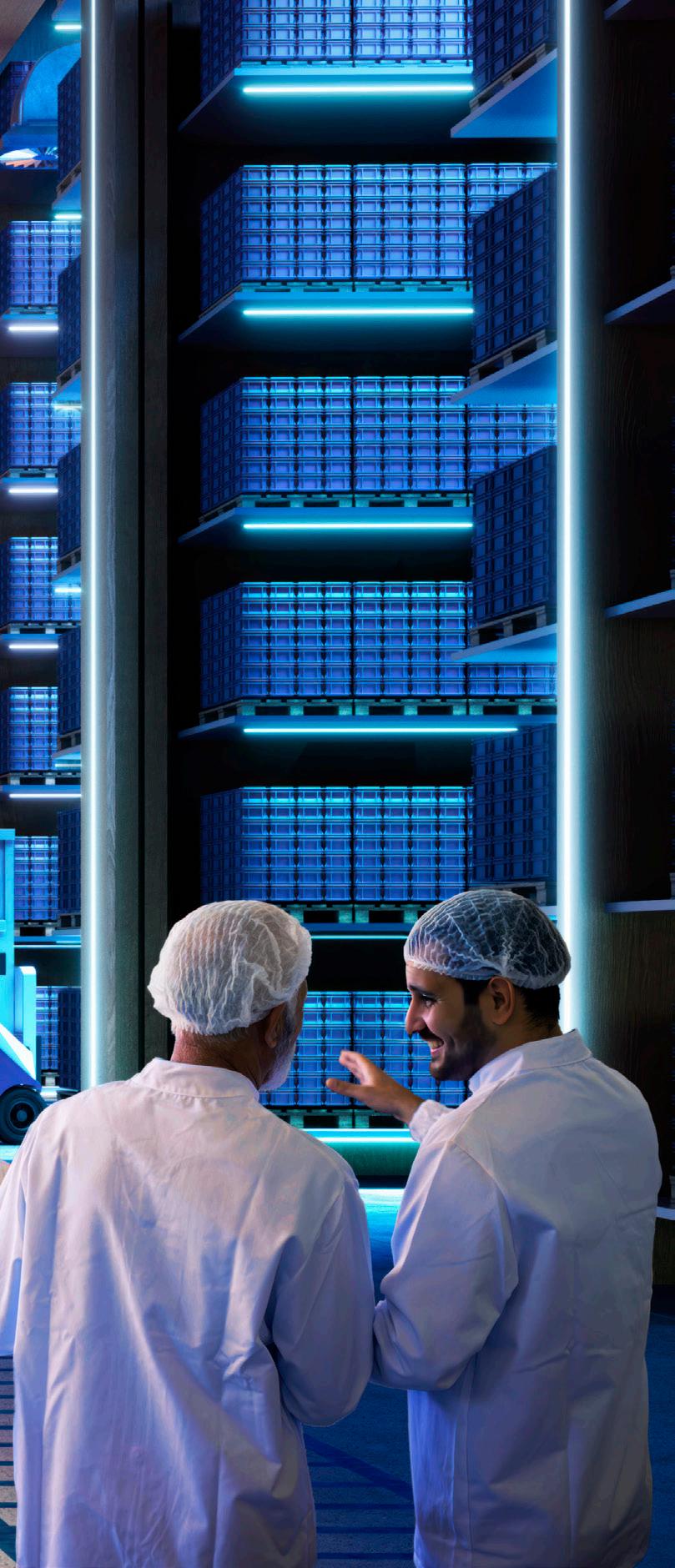
“We are incredibly proud to partner with Bühler, a company with 163 years of illustrious history. Our team is really excited to work with Andreas Baumann and his team to deliver large-scale BSF facilities around the world and make the impact that we know BSF farming can make in creating a more sustainable and efficient global food system,” says Keiran Whitaker, Founder and CEO of Entocycle.
“The industrial use of BSF is rapidly gaining traction among businesses seeking alternative feed protein sources and more sustainable practices. To accelerate scaling this industry we must contribute to lowering the hurdles for companies to enter this business,” says Andreas Baumann. “That is why we are very pleased to cooperate with the Entocycle team in future projects, as they share the same philosophy as Bühler in ensuring the quality and reliability of their solutions.”
“It’s going to be a great partnership, not only in the way that our businesses and teams complement one another in terms of respective skill sets and experience but also in the strong alignment of values around building a better and more sustainable world,” says Matthew Simmonds, Managing Director of Entocycle.
For more information, visit www.buhlergroup.com
LIVESTOCK & POULTRY ME FEED PROTEIN 39
JULY-SEPTEMBER 2023
RUMINIX: THE MOST COMPREHENSIVE RUMINANT BALANCING SOFTWARE ON THE MARKET
The new ration balancing software Ruminix was developed and perfected by A-Systems after many discussions with professional users. This competitive and innovative software benefit from unparalleled ergonomics and ease of use appreciated by all ruminant nutrition professionals.
Intuitive and effective ration work thanks to the Ruminix software
Ruminix offers multiple nutritional requirements models for dairy cow, beef cow, and sheep. Where other ration balancers often require users to rely on a fixed model, this software allows users to use their own knowledge and technicality to adjust the open requirements models. Therefore users can configure the software with the information they think are most relevant to their own technical and economical context. This ration balancing software combines
therefore both efficiency and flexibility in order to cover all needs and knowledge of the professionals.
For field technical or commercial users, using Ruminix is very intuitive: they can calculate the optimal rations for their client in just a few steps. Graphical indicators also allow the relevance of the ration to be validated at a glance. These key indicators can be adapted, and allow each user to shine a light on the most important results, and ease the creation of spot on feeding programs.
From any given ration, it is possible to calculate a rationing plan that will account for changes in animal productions when working with dairy cow.
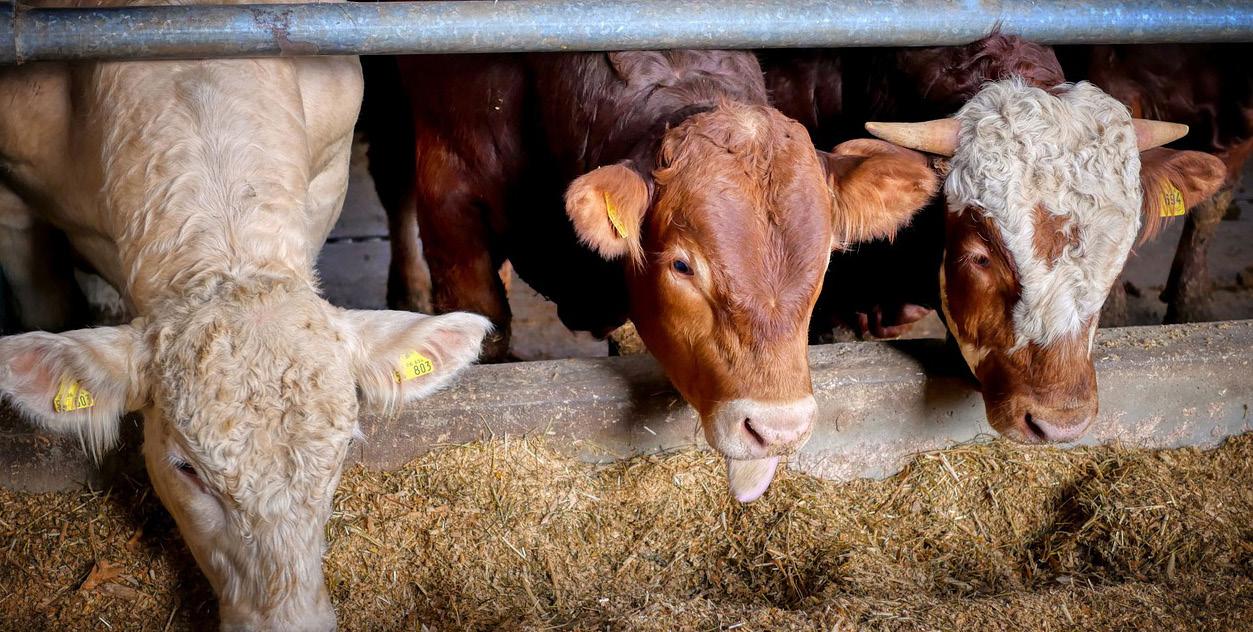
The customised feed creation module allows the creation of customised complementary feed based on the forages available at the farm.
The highly customisable reporting tool allows the advisor to
leaver their client with a concise, relevant, and aesthetically pleasing document.
The distribution plan is a very convenient document that the farmer can user to know the quantity of ingredients to mix based on the size of their mixer and on the number of meals to prepare for the herd.
A forecast of ingredients consumption allows the user to plan the raw material quantities that will be needed and can help in anticipating shortages.
Ruminix can share data with the formulation software Allix. With the built-in communication tool WebLink, data such as the ranges of feeds, tariffs, or requirements can be shared with Ruminix. Alternatively, customised feed calculated with Ruminix can be shared with Allix to then be transferred to the factory.
For more information, visit www.a-systems.com
40 ANIMAL NUTRITION
JULY-SEPTEMBER 2023 LIVESTOCK & POULTRY ME
PERFORMANCE AND HEALTH OF EARLY LACTATING DAIRY COWS UNDER LONG-TERM ENVIRONMENTAL HEAT STRESS
Dairy cows are susceptible to thermal stress due to their level of milk production and feed intake. The present study sought to determine the impact of dietary inclusion of Loprotin on early lactation high producing dairy cows' production performance, metabolic responses and health status during a period of long-term environmental heat stress.

High genetic merit modern dairy cows undergo thermal stress starting at an average temperature-humidity index (THI) of 68, whereas at THI > 72 significant losses in milk production have been observed. Under heat stress, dry matter intake typically decreases i.e., cows will be subjected to an unfavourable energy status. Consequently, milk production and reproductive indices would be impaired. Feeding amino acid (AA) deficient diets
resulted in heat production elevation in the animals, due to the increase of tissue protein turnover. Optimising postruminal levels of rate-limiting AA such as methionine (Met), i.e., metabolisable Met concentration, might alleviate the negative consequences of heat stress. Recent studies indicated that feeding rumen-protected Met could increase milk protein yield.
Zinc (Zn), one of the most essential trace minerals for animals, is incorporated into a
variety of proteins and enzymes that are involved in a wide range of physiological processes. It was shown that feed intake and both Zn digestibility and deposition in dairy cows increased linearly with increasing Zn-Met supplementation. Organic form of Zn supplementation could enhance milk production and decrease somatic cell scores in lactating cows.
For more information, visit www.kaesler-nutrition.com
JULY-SEPTEMBER 2023 LIVESTOCK & POULTRY ME ANIMAL HEALTH 41
FOR SMART AGRICULTURE: DURABLE MILK METER SENSORS MADE OF ULTRASON ®

The world-leading dairy equipment company milkrite | InterPuls, Methuen Park, United Kingdom is now using Ultrason® P 3010 to manufacture housings of milk meter sensors used for checking the milking results of cows, sheep and goats. The BASF polyphenylsulfone (PPSU) contributes to the durability of the sensor because of its high toughness and chemical resistance: Thus the milk meters can withstand the rough farm environment as well as the repeated cleaning of the milk meters. The transparent Ultrason® grade supports easy visual checking of the milk flowing through the metering device and in the long run does not show any discoloration. It also meets milkrite | InterPuls’s strict requirements regarding food contact approval.
Milk meter sensors are used to control the volume and quality of the milk still within the milking process. The milk can be weighed and its conductivity can be
measured. milkrite | InterPuls selected Ultrason® P because farmers can easily see through the transparent material to check the milk’s appearance. Dairy components made of Ultrason® P can withstand kicks by cows, farm dung and then be easily cleaned by many different cleaning agents retaining both transparency and high mechanical strength, also demonstrating a high resistance to stress cracking. "We appreciate the characteristics of BASF’s Ultrason® in this important component of dairy technology", says Stefano Ferri, Global R&D Program and Intellectual Property Manager at milkrite | InterPuls. “It contributes to the excellent performance of our milk meters like iMilk600, iMilkNano and ACRsmart MMV which are the heart of the demanding milking process and contribute to a reliable and accurate milk quality control. The sensor housing is a complex technical part exposed to high stress in a challenging environment with superior
demands on its continuous-use properties."
The medium-viscosity grade Ultrason® P 3010 also enables a compact and smooth design of the milk meter, ensuring a stable vacuum and foamfree performance. “For other demanding components in dairy technology, like manifolds and buffers, BASF offers further optimized polyarylethersulfones”, says Georg Graessel from Global Business Development Ultrason® at BASF. “The grades Ultrason® P 2010, E 2010 and E 3010 meet different demands on toughness and superior chemical performance like resistance against superheated steam needed for repeated cleaning.” When the milk is further processed, all these Ultrason® grades can also be used for the production equipment of dairy foods like cheeses, yogurts and curd. These foods contain a high level of butterfat usually causing stress cracking in other materials. Made of Ultrason® these components show a high wearability and durability.
Ultrason® is the trade name for BASF’s product range of polyethersulfone (Ultrason® E), polysulfone (Ultrason® S) and polyphenylsulfone (Ultrason® P). The high-performance thermoplastic is used to manufacture water filtration membranes, stylish, durable and safe household and catering applications as well as lightweight components for the automotive and aerospace industries. Ultrason® brands can substitute thermosets, metals and ceramics in many applications because of their extraordinary property profile.
For more information, visit www.ultrason.basf.com
42 DAIRY TECHNOLOGY
JULY-SEPTEMBER 2023 LIVESTOCK & POULTRY ME
CARGILL AND PARTNERS ANNOUNCE FIRST GOLD STANDARD-APPROVED METHANE EMISSIONS REDUCTION METHODOLOGY FOR BEEF PRODUCERS

Beef producers are leading the way toward the future of sustainable agriculture and hold the ability to mitigate methane emissions that address climate change. To recognize these efforts and enable reduction value to be quantified, Cargill partnered with TREES Consulting to develop a Gold Standard-approved beef methodology that offers the global beef industry a framework for measuring methane emissions reduction using feed supplements that have been incorporated into beef cattle diets, such as SilvAir™. Gold Standard’s certification process allows climate and sustainable development initiatives to quantify, manage and maximize their impacts toward climate security, and requires verifiable impact toward three or more of the United Nation’s Sustainable Development Goals.
The new beef methodology defines a set of parameters that beef producers can adopt to quantify reductions in methane emissions, a greenhouse gas (GHG) that is derived from enteric fermentation (digestion process) in cattle through eructation (burping), as well as from manure handling. The new methodology is now available for beef producers worldwide to quantify, audit and verify methane reductions, enabling them to register their GHG mitigation project for Gold Standard certification. Gold
Standard’s Verified Emissions Reductions (VERs) can be traded in carbon markets, allowing credit purchasers to directly support the projects. These efforts can also be recognized in corporate value chains, whereby beef producers and food companies account for the reduction in supply chain GHG emissions, which contributes to their Scope 3 targets.
As a leader in animal agriculture and the beef supply chain, Cargill is in an ideal position to support its network of beef producers with the resources and innovation they will need to meet sustainability challenges. Through its Reach4Reduction program, Cargill is taking a holistic approach to methane reduction by uncovering the potential of feed management and nutrition to do more with less, helping to ensuring food security while protecting the planet. Although methane emissions from the enteric fermentation of cattle are a normal occurrence, Cargill recognizes there’s opportunity to reduce the intensity of methane, through its global animal nutrition business.
Cargill is working
to accelerate progress by supporting producers with managing on-farm productivity to improve feed conversion rates, optimizing animal health and nutrition, and innovating with new additives and solutions that reduce methane and nitrogen emissions directly. For beef producers who are adopting these technologies, the new methodology “Reducing Methane Emissions from Enteric Fermentation in Beef Cattle through Application of Feed Supplements” will enable them to accurately quantify the reduction of methane emissions and can provide them with opportunities to valorize their efforts.
For more information, visit www.cargill.com
JULY-SEPTEMBER 2023
LIVESTOCK & POULTRY ME LIVESTOCK FARMING 43
PIF ESTABLISHES SAWANI COMPANY TO UNLOCK THE POTENTIAL OF SAUDI CAMEL DAIRY INDUSTRY
The Public Investment Fund
(PIF) has announced the establishment of Sawani Company (Company or Sawani), to enable the growth of the Saudi camel farming industry and actively contribute to its sustainable development. The Company aims to be a leading producer of camel dairy products, supporting Saudi Arabia’s wider Food and Agriculture sector and helping to diversify the Saudi economy, in line with Vision 2030.

It will work in partnership with the private sector to boost the production capacity of the camel dairy industry and seek to elevate the standards of the domestic production ecosystem by modernizing operations, improving the localization of knowledge and investing in the sector’s latest technologies.
PIF has invested strategically in the Food and Agriculture sector to help diversify the Saudi economy, and support its unique produce industries. Among these investments are its creation of the
Saudi Coffee Company, which promotes Saudi Khulani coffee beans and the Halal Products Development Company, which invests in the halal products sector. Since 2017, PIF has established 84 companies in 13 strategic sectors.
Sawani will place sustainability at the center of all stages of production, distribution, and marketing, and raise awareness of the health benefits of camel dairy products among consumers. It will also showcase the unique history and cultural heritage of camel husbandry within Saudi Arabia. Camel milk is commonly known for its nutritional benefits, including high amounts of minerals and vitamins such as A, B, E and C. It is also rich in calcium, protein and anti-oxidants. Camel milk is also considered low in cholesterol and is easy to digest. Majed Al-Assaf, Head of Consumer Goods and Retail in the MENA Investments Division at PIF, said: “Saudi Arabia has extensive experience and
knowledge of the camel dairy industry and enormous potential to expand its operational capabilities and wider ecosystem. These factors represent a competitive advantage across the entire supply chain, which, alongside investment, will enable significant growth of the industry, and eventually lead to the export of camel dairy products, which have many nutritional benefits, to regional and global markets.”
The establishment of Sawani will support the growth of the Food and Agriculture sector as well as contributing to sustainable economic and social development, in line with Vision 2030. A key part of the company’s strategy is to increase awareness and knowledge of the industry in order to preserve it, as well as driving sustainable growth through the introduction of the best scientific practices in modern manufacturing technologies at the local level.
For more information, visit www.pif.gov.sa
JULY-SEPTEMBER 2023 LIVESTOCK & POULTRY ME 44 CAMEL FARMING

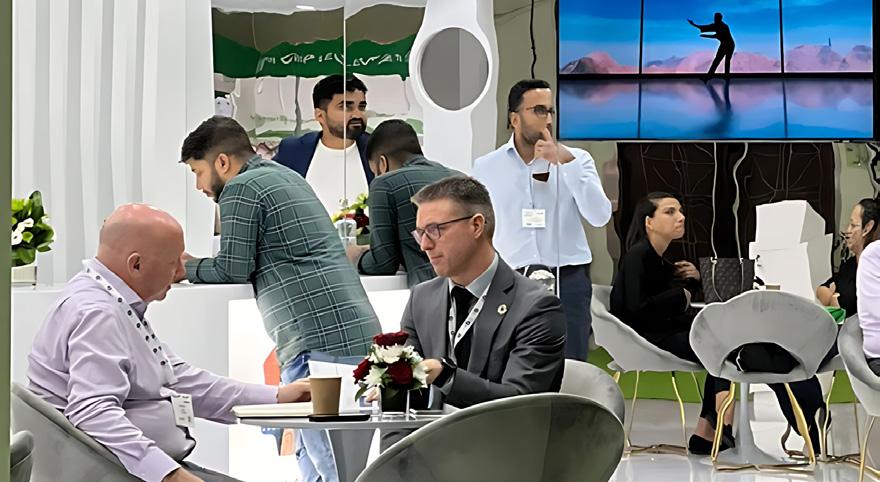


AgraME is largest gathering of agriculture and trade professionals in the Middle East If you are a solution provider in Agriculture, Horticulture, Indoor Farming, Livestock Nutrition and Health, Agtech, and Aquaculture, don’t miss the opportunity to tap into the vast potential for growth in the Middle East’s agriculture sector! www.agramiddleeast.com Brent Crosbie | T: +971 52 5072847 | E: brent.crosbie@informa.com CONTACT CREATING SUSTAINABLE FOOD SUPPLY IN ARID LANDSCAPES 5,000+ visitors and buyers 77% of exhibitors stated that participatin helped them to establish new business contacts 100+ Exhibitors Dubai World Trade Centre, UAE 09 - 10 OCTOBER 2 0 2 3 Featuring










ABU DHABI, U.A.E. 20-22 NOVEMBER HORTI AGRI NEXT MEA 2023 VIV MEA 2023 ABU DHABI, U.A.E. 20-22 NOVEMBER
TRADE SHOW FROM FEED TO FOOD FOR THE MIDDLE EAST AND AFRICA Register your visit now! Partners VIV MEA 2023 and Horti Agri Next MEA 2023 WWW.VIVMEA.NL
TRADE SHOW FROM SEED TO FOOD FOR THE MIDDLE EAST AND AFRICA WWW.HORTIAGRINEXT.COM Register your visit now!
INTERNATIONAL
INTERNATIONAL



















































































































































